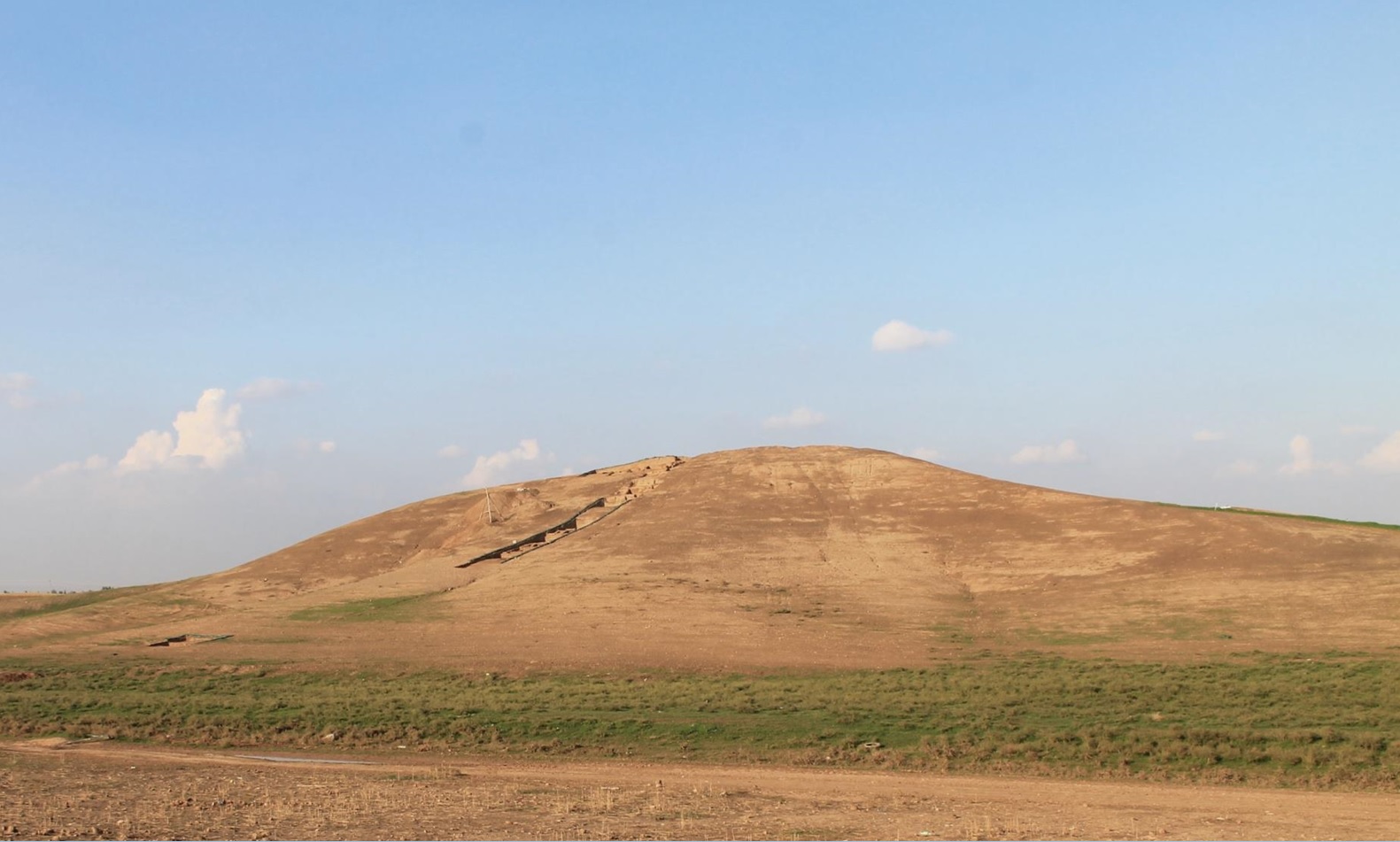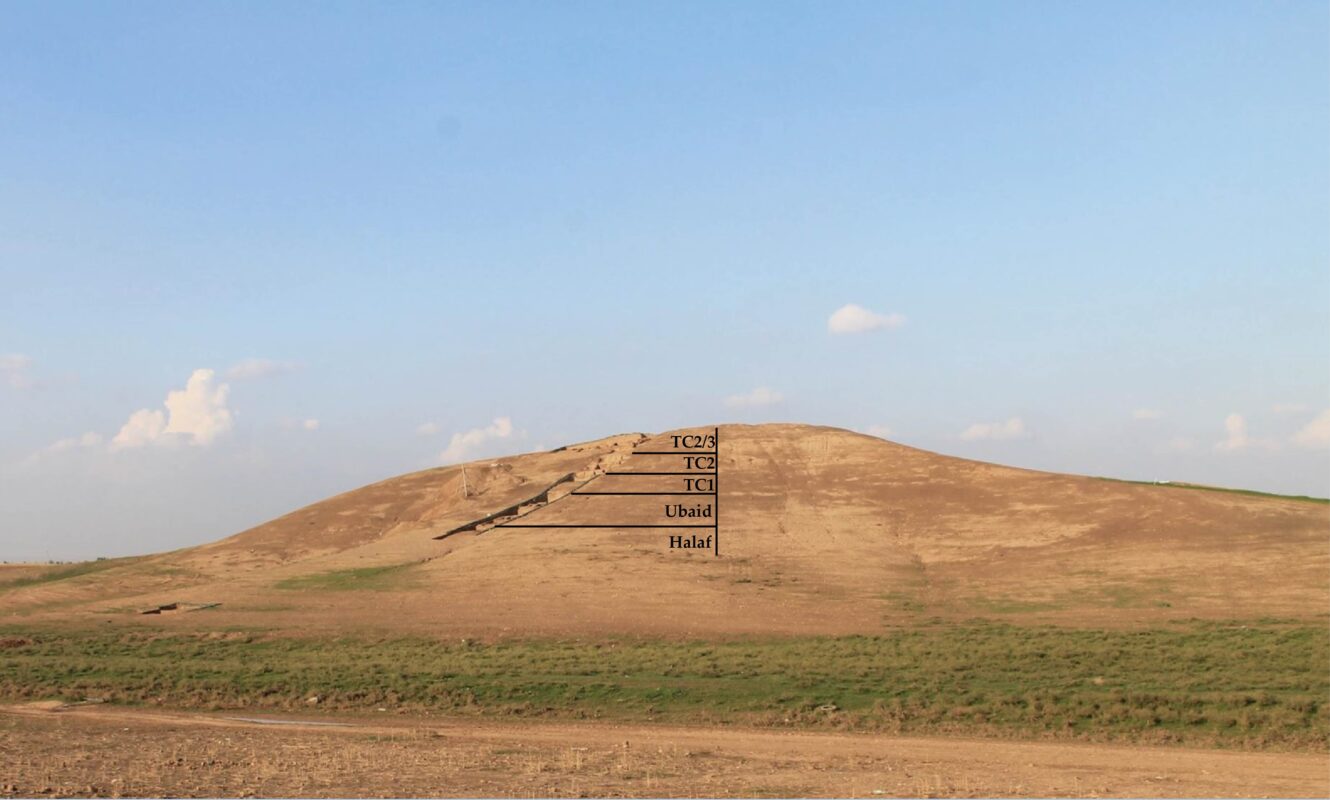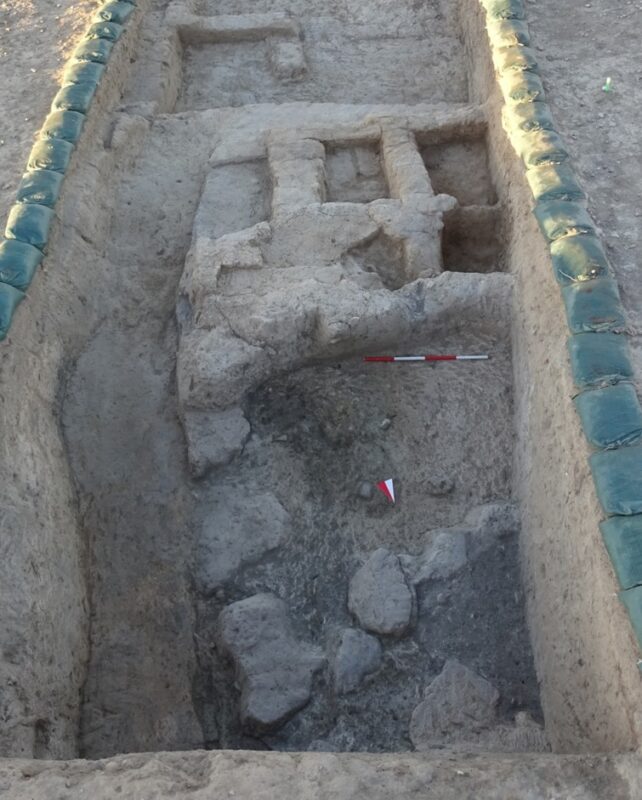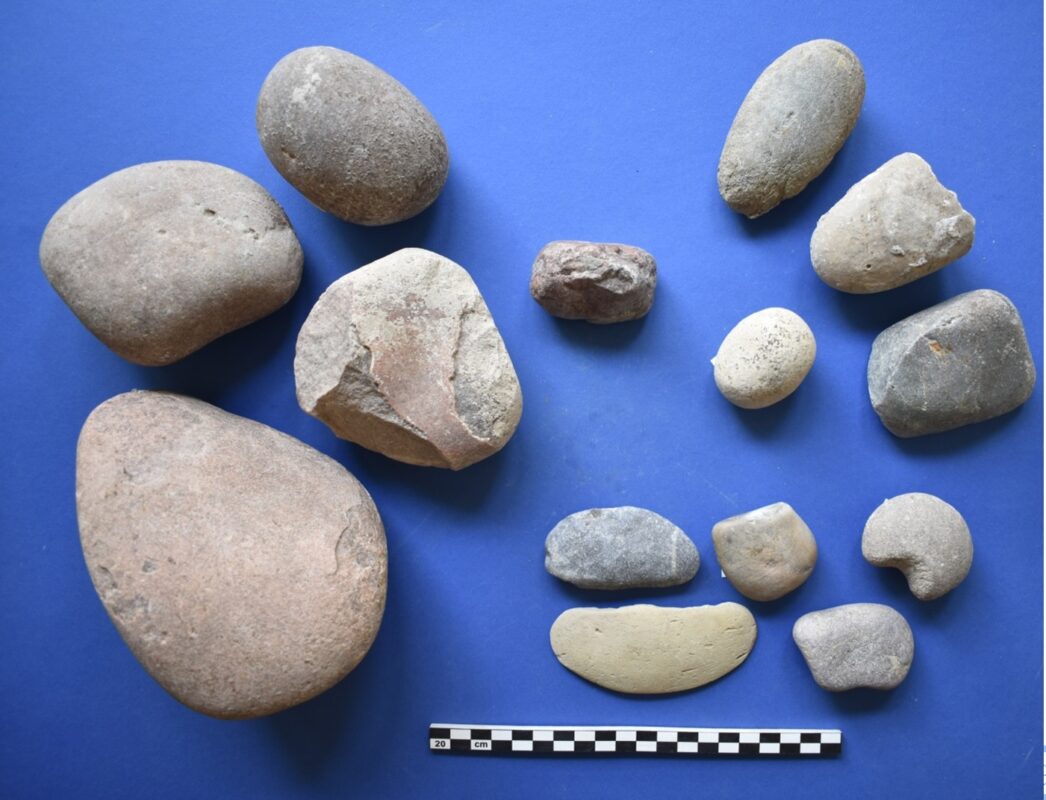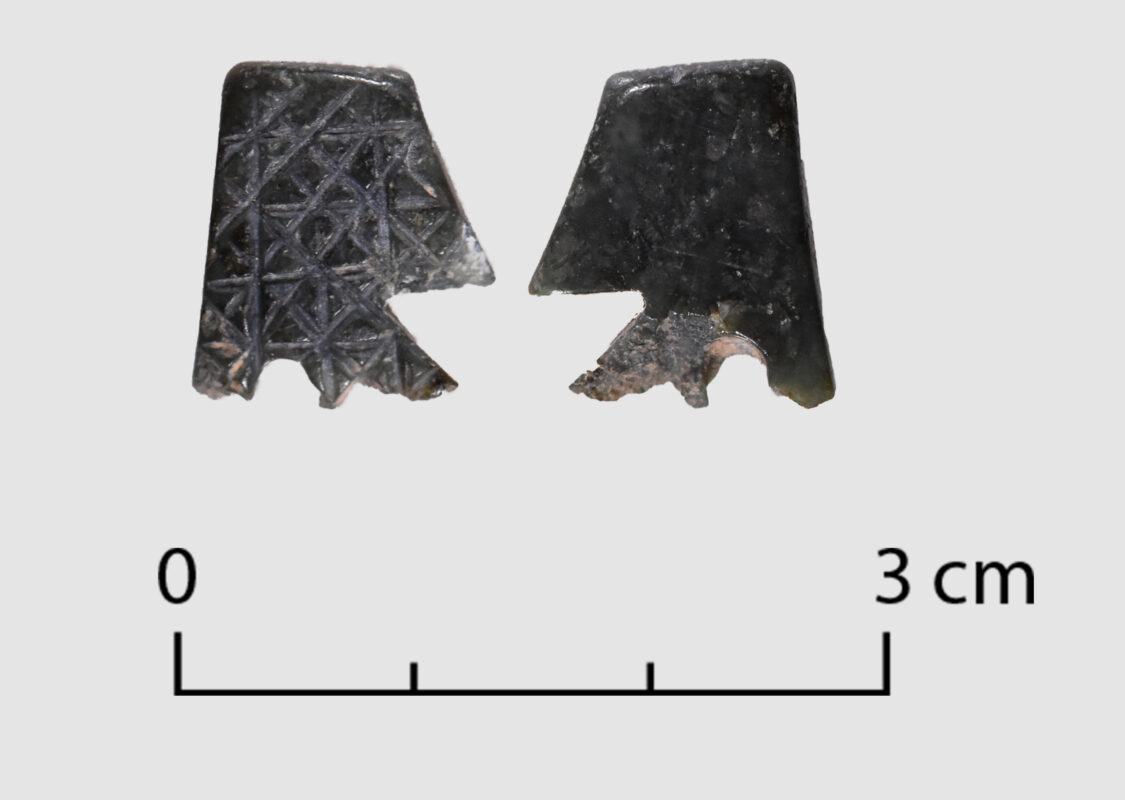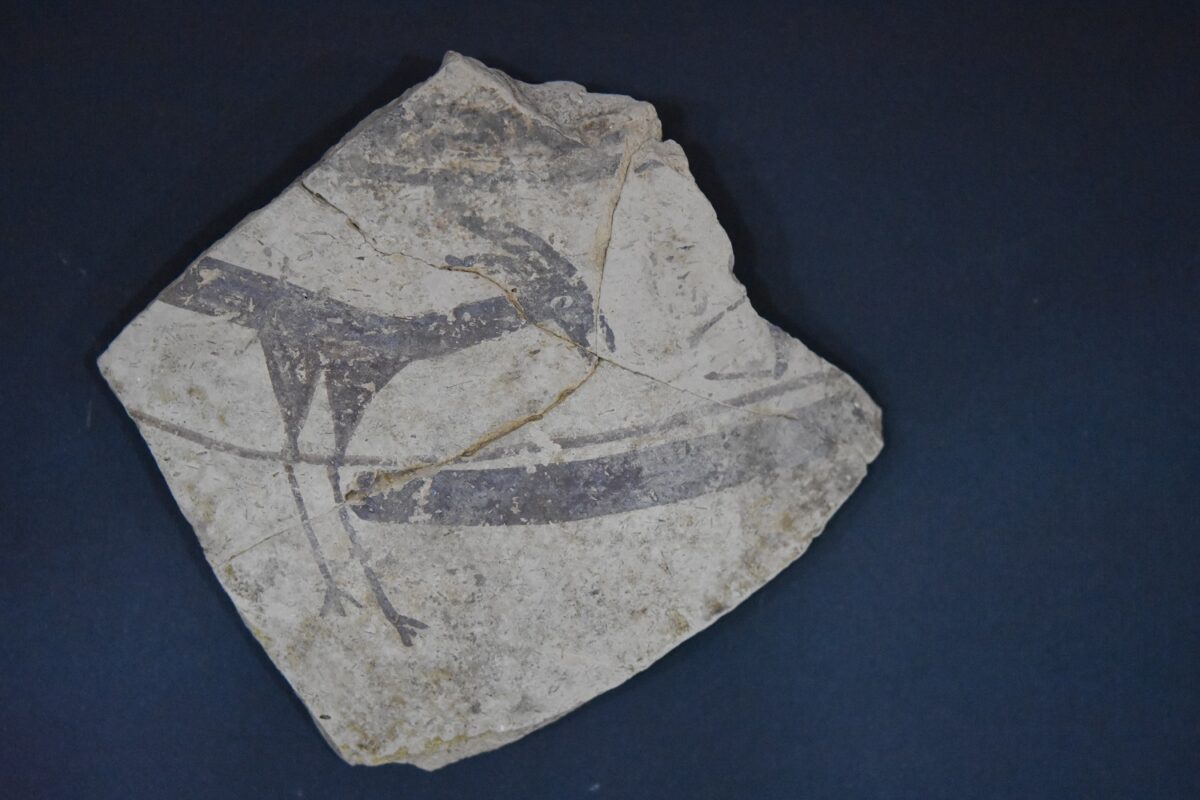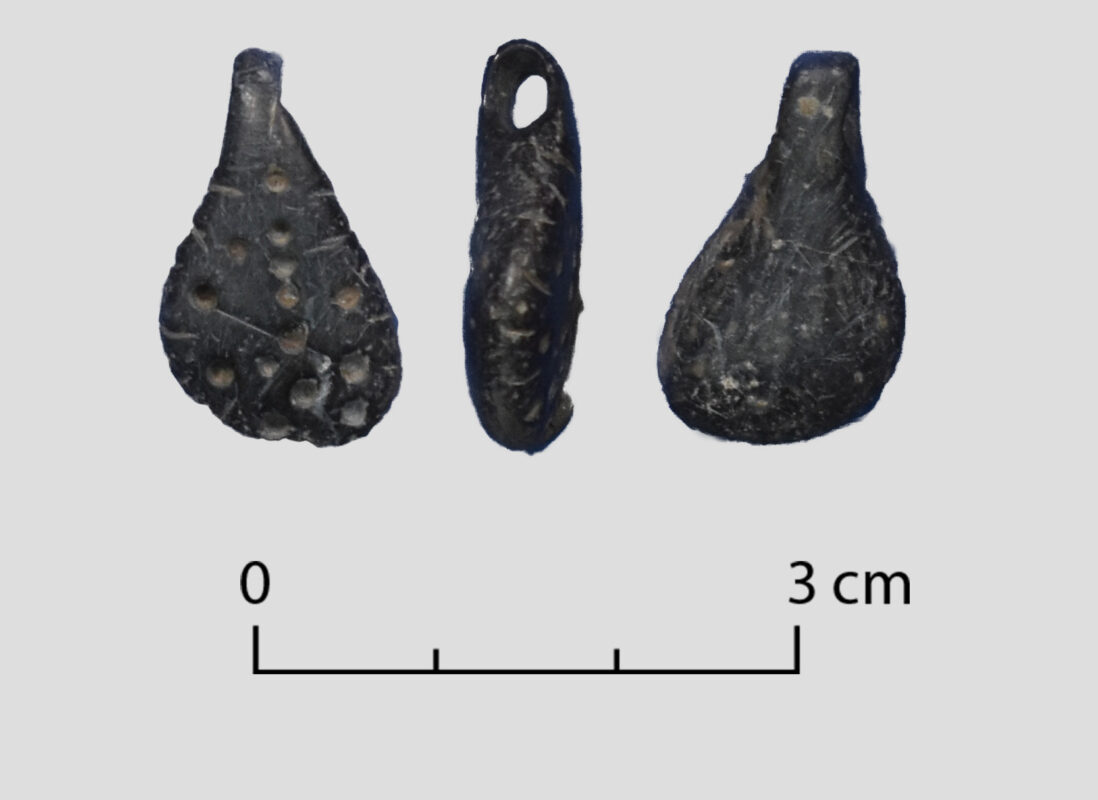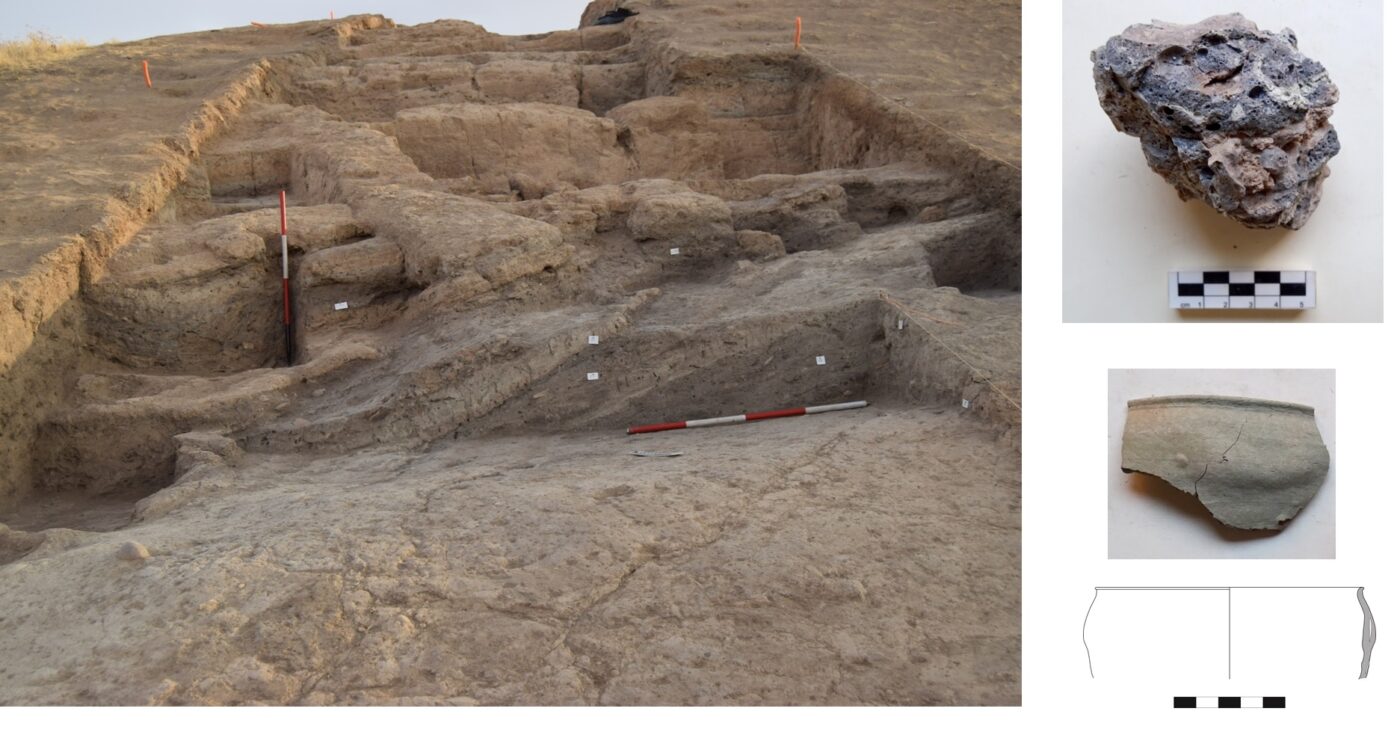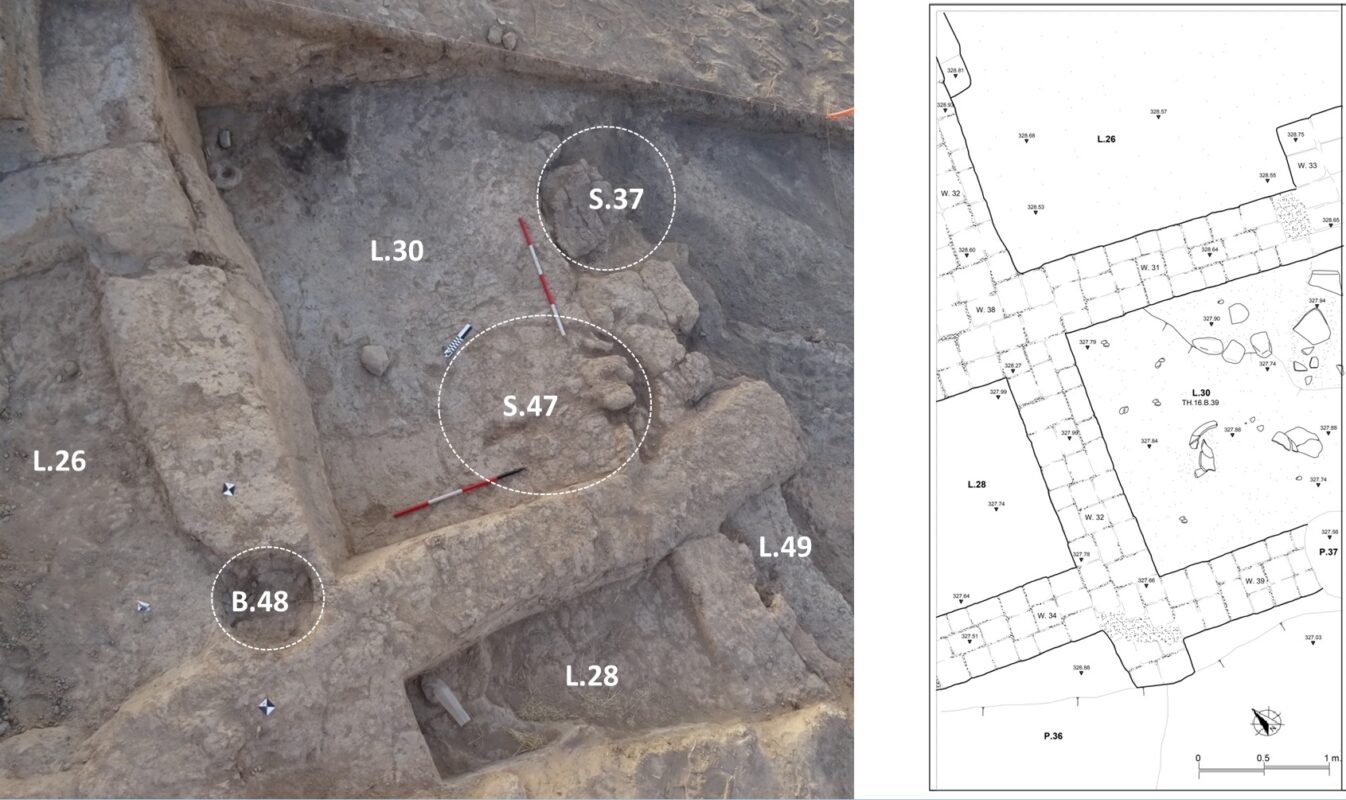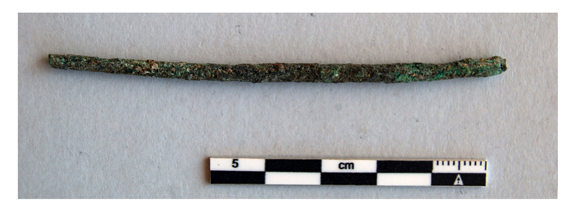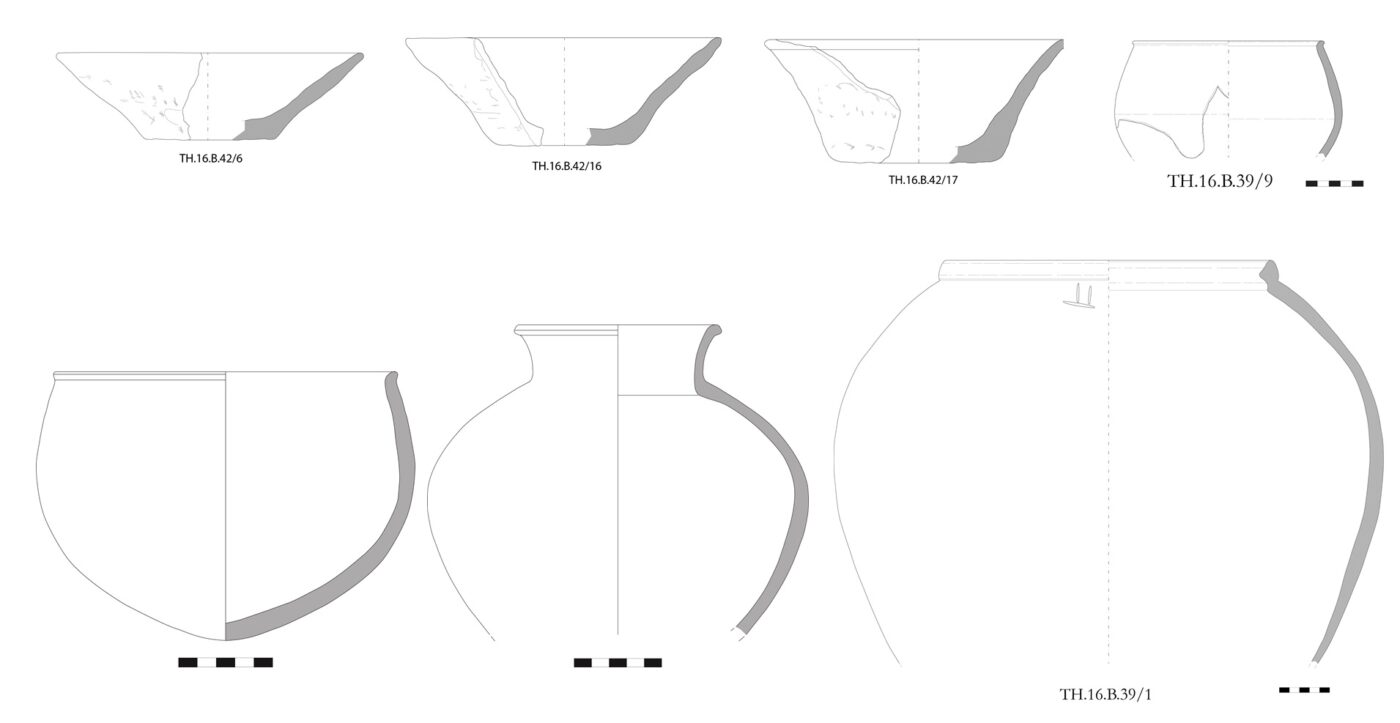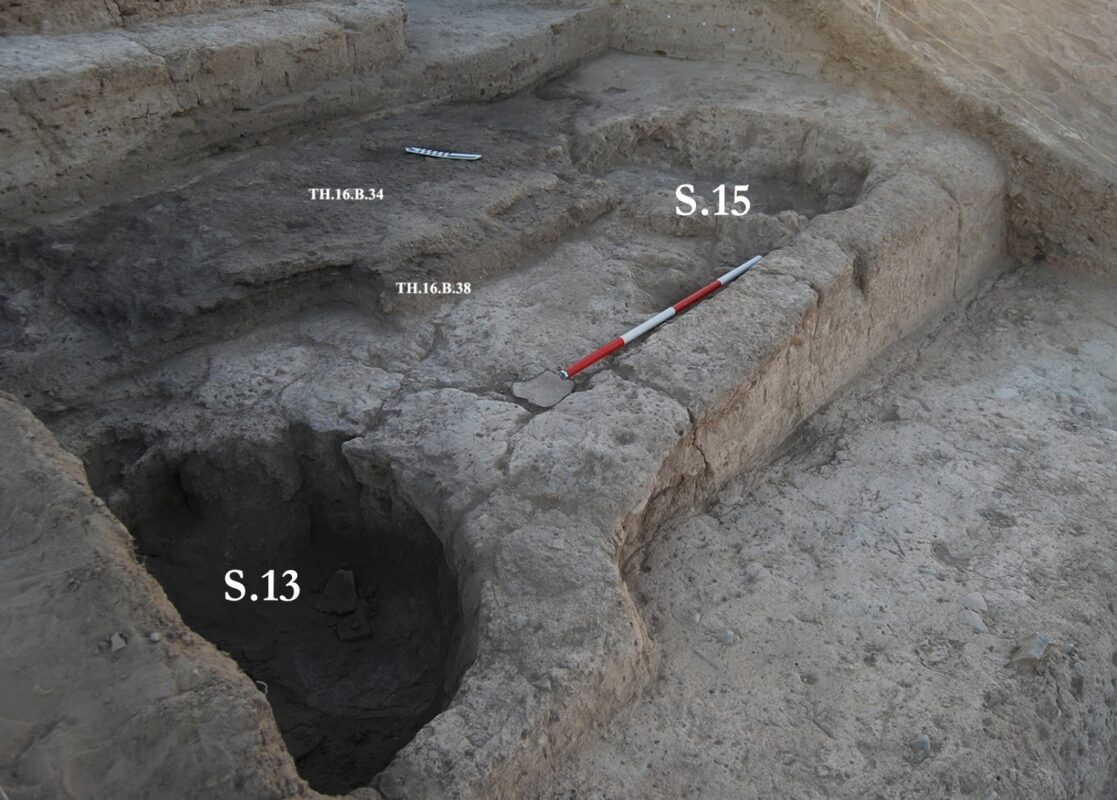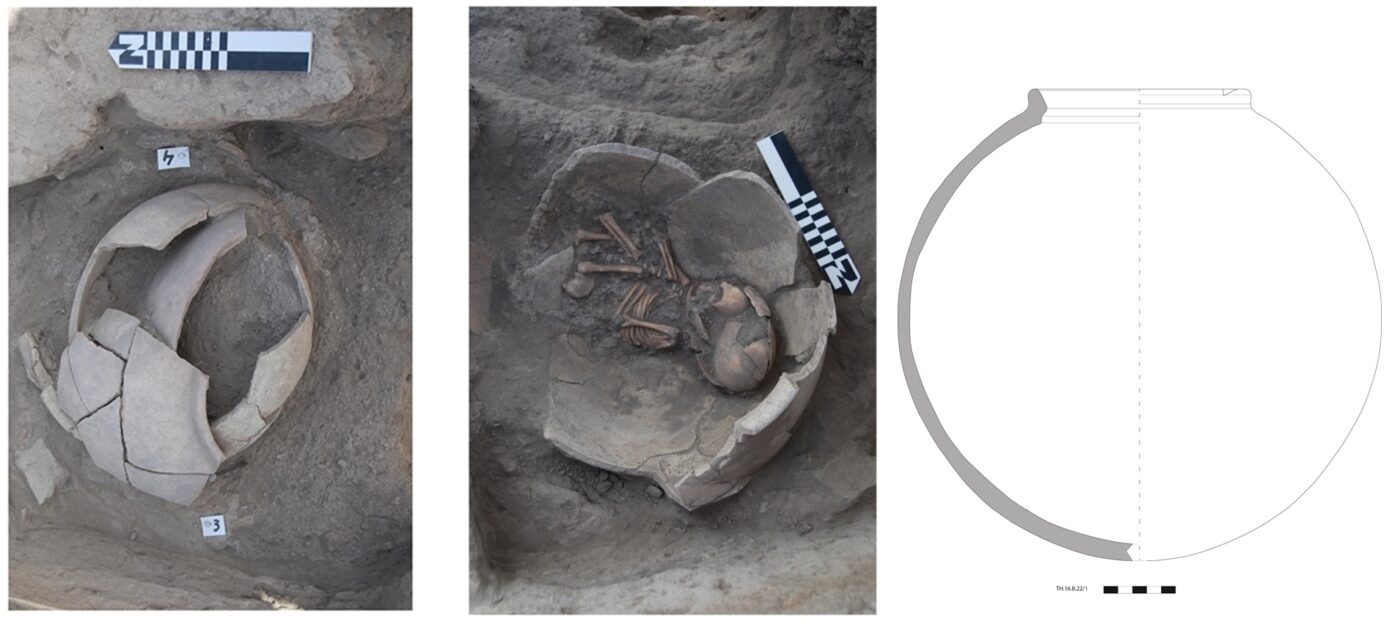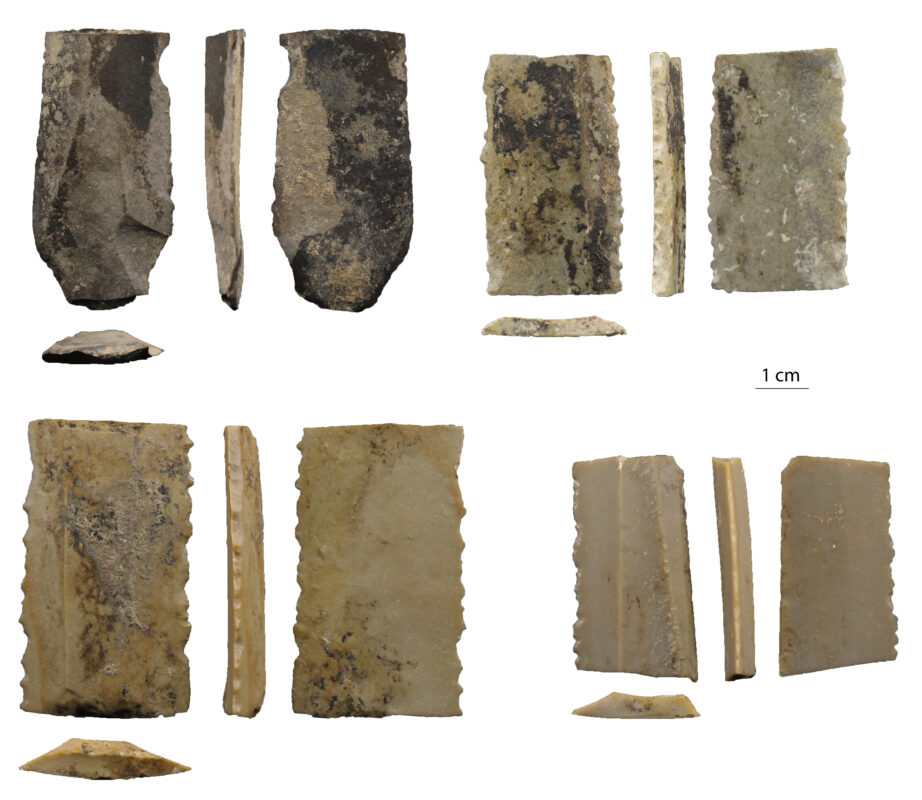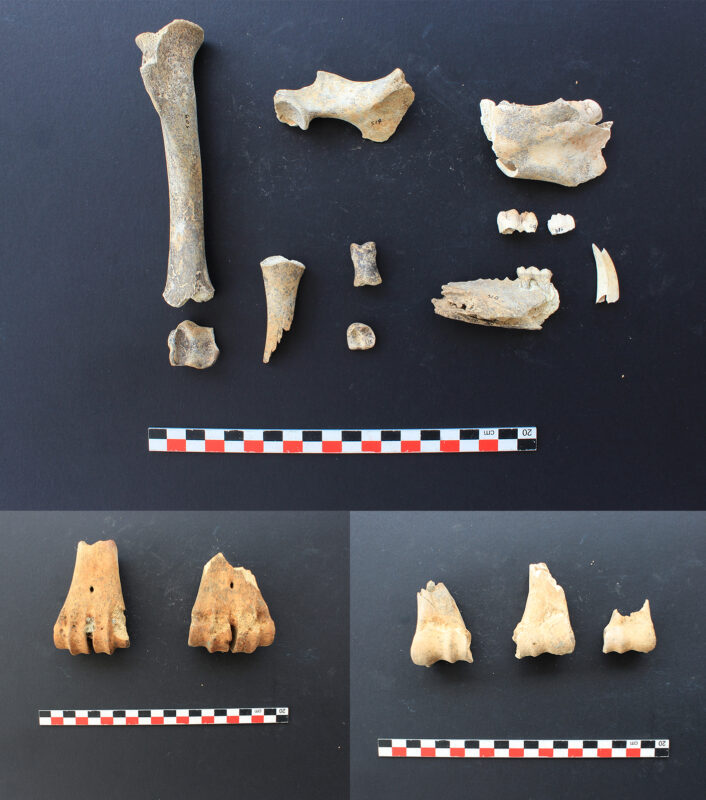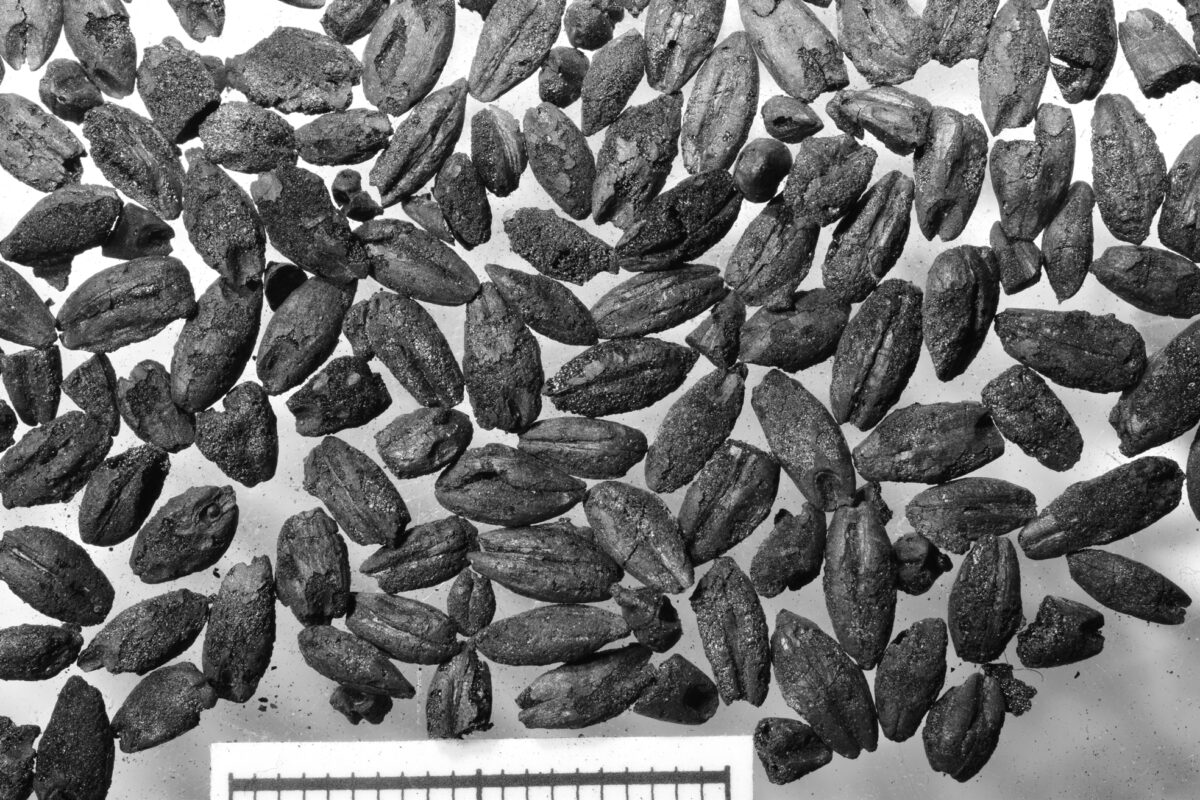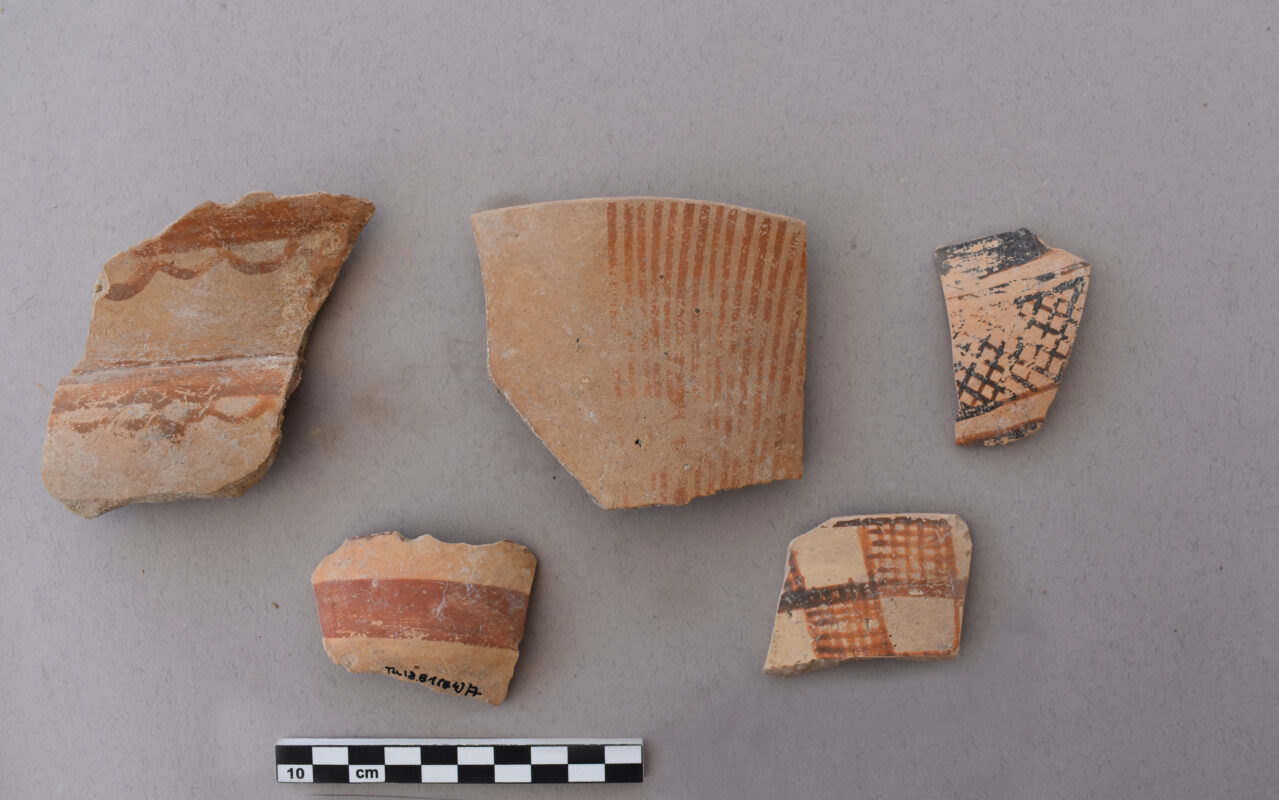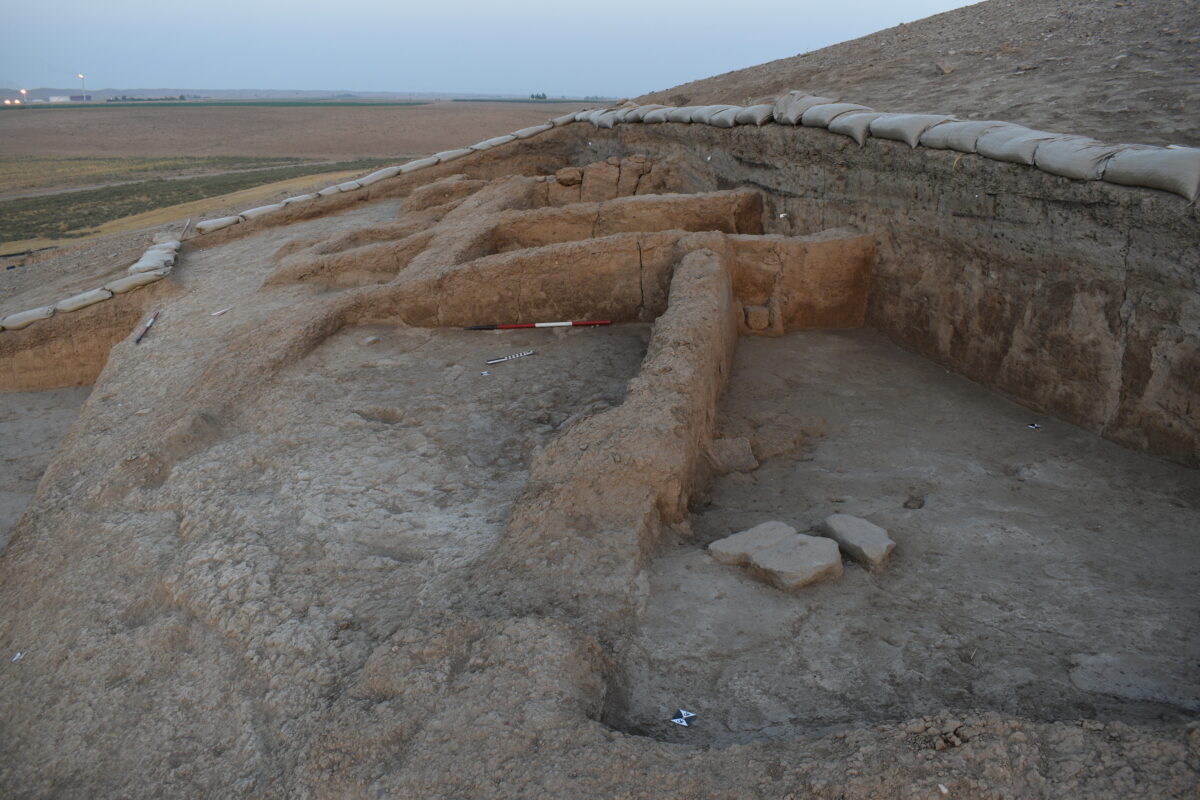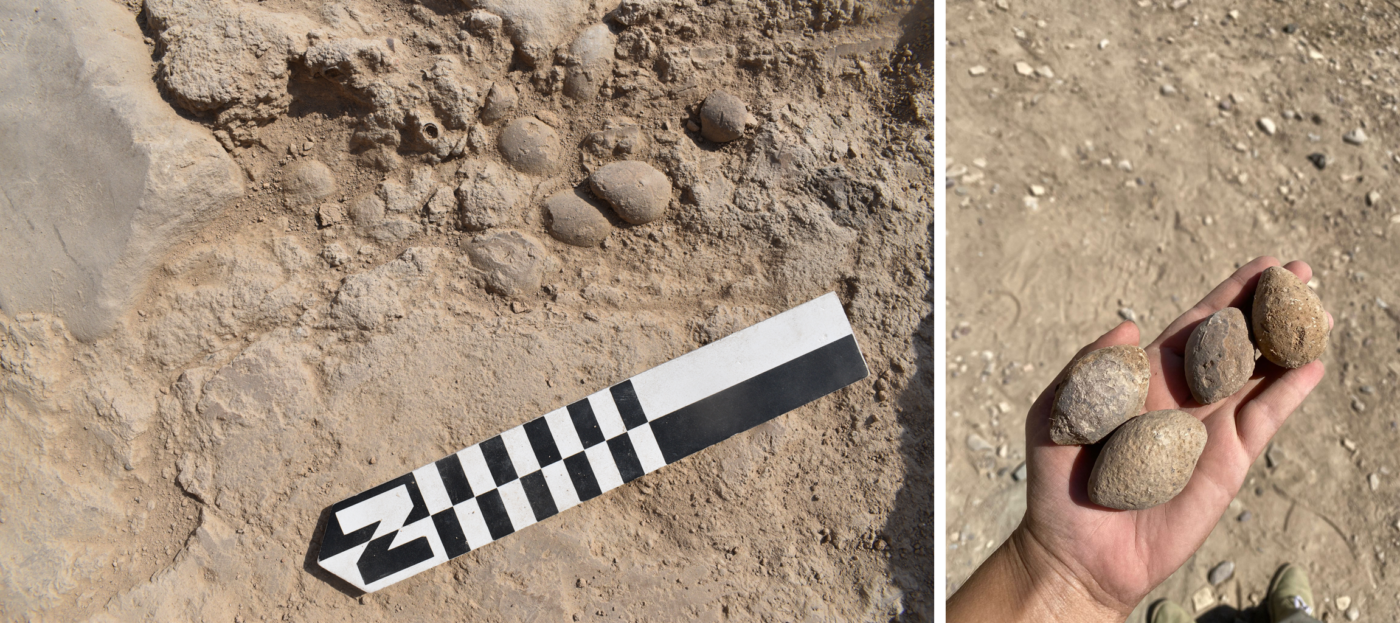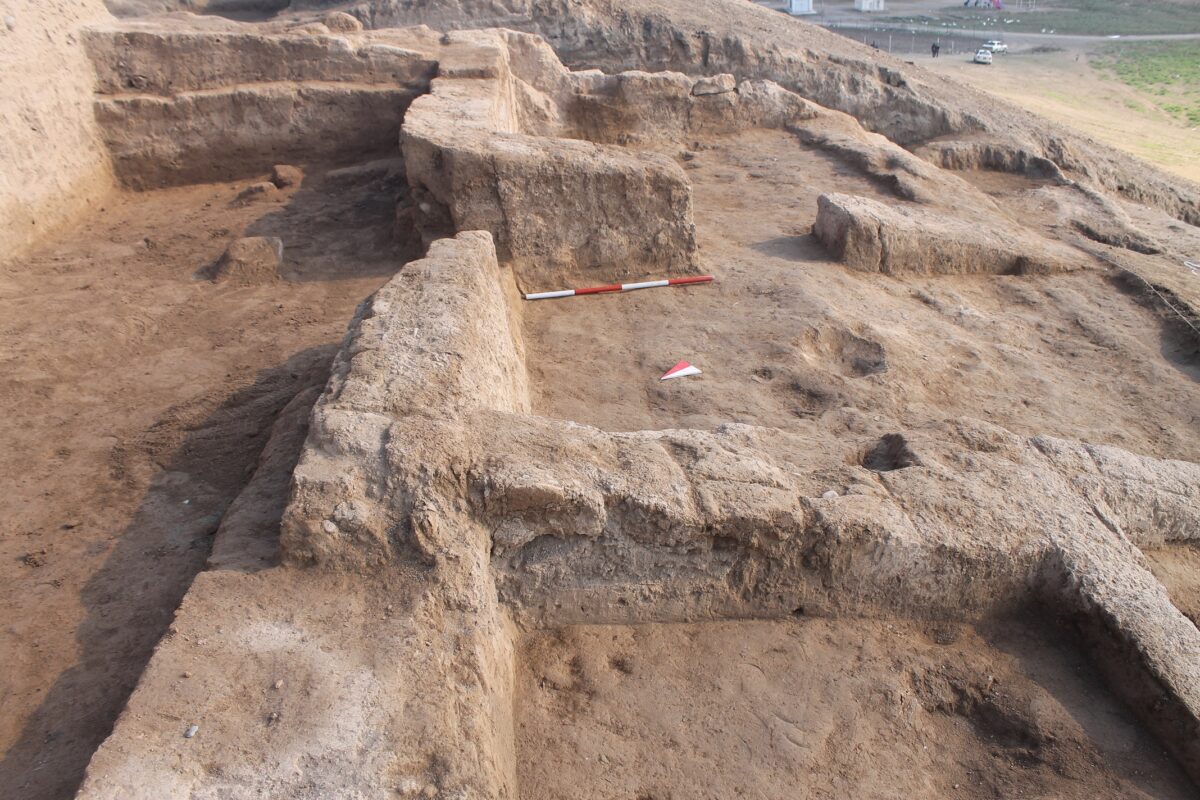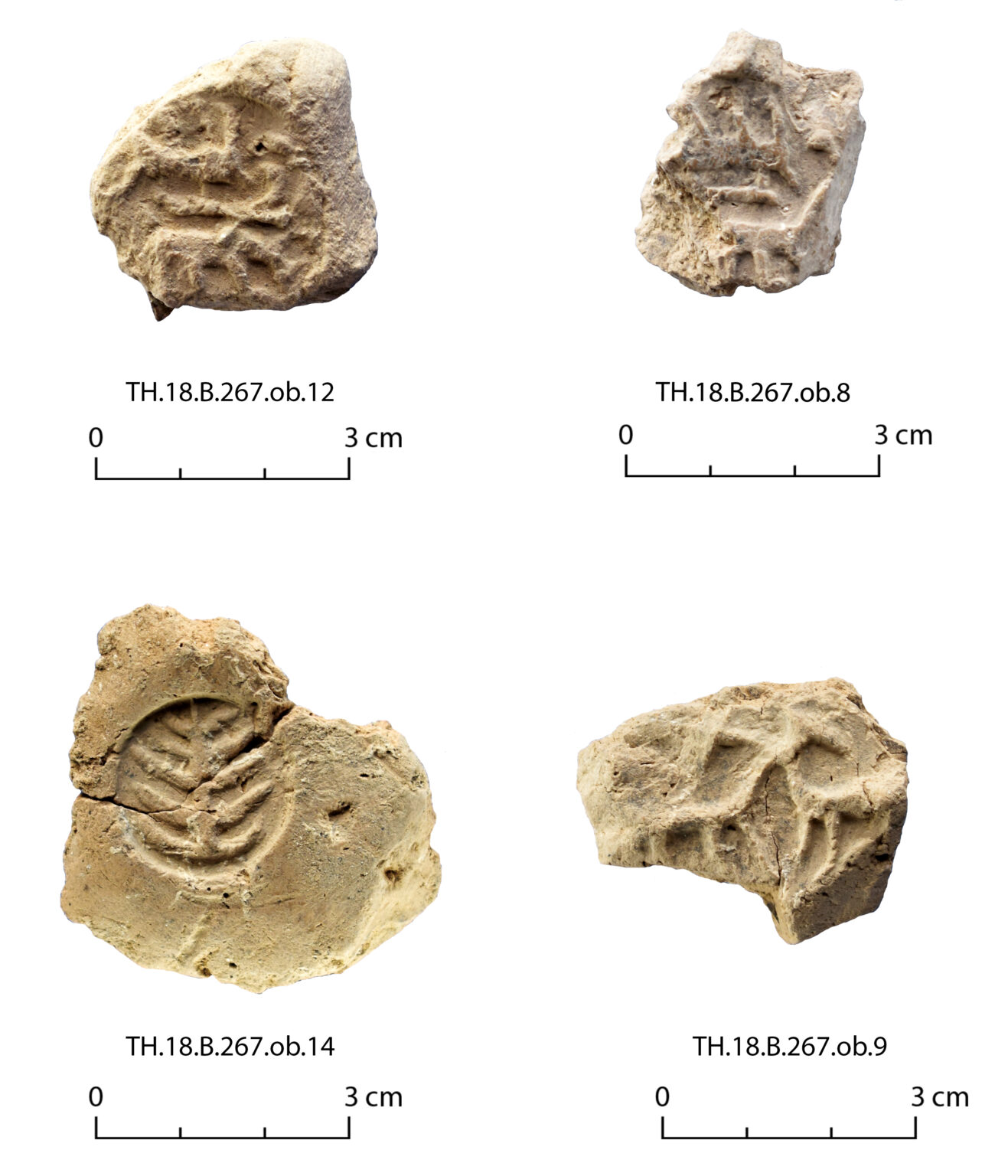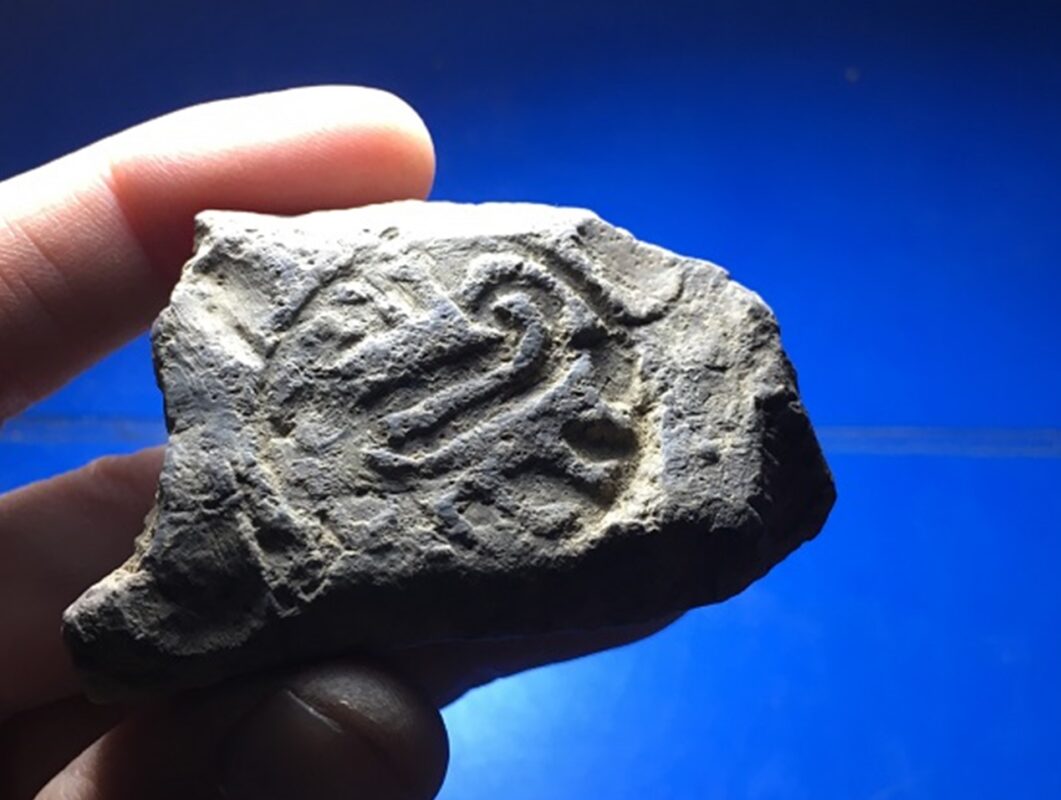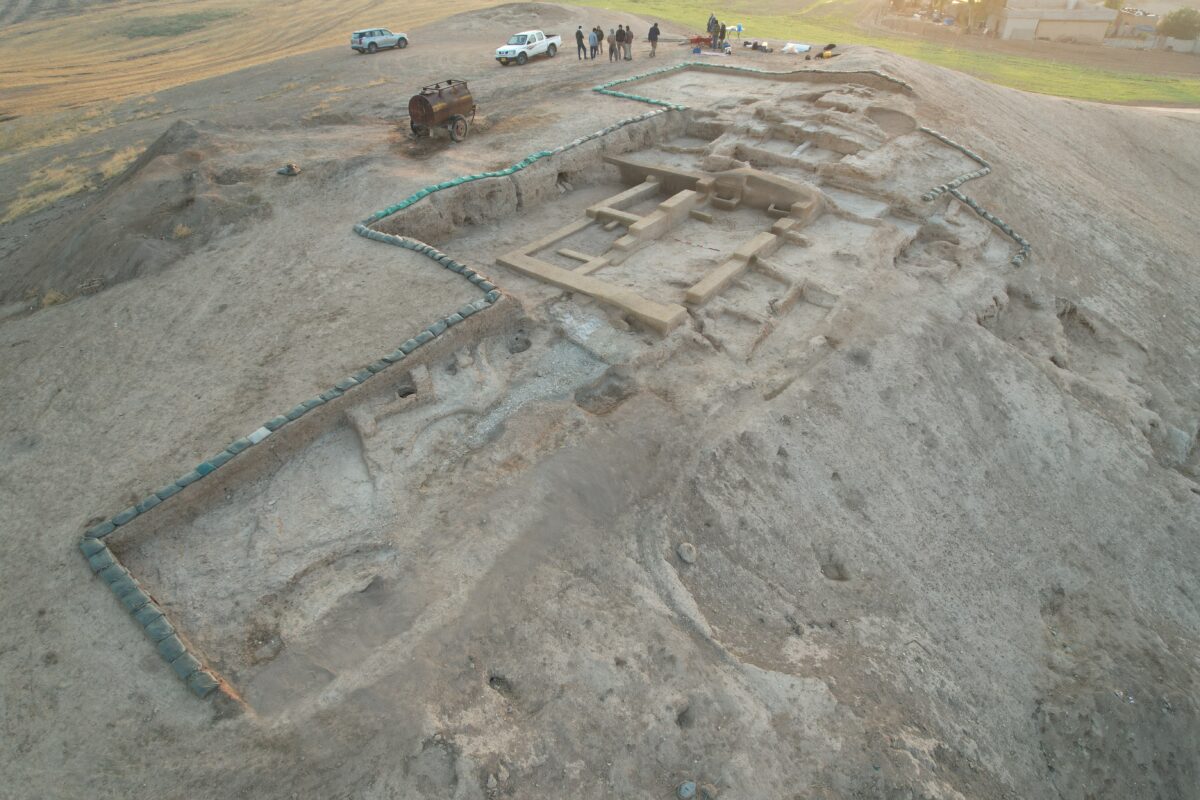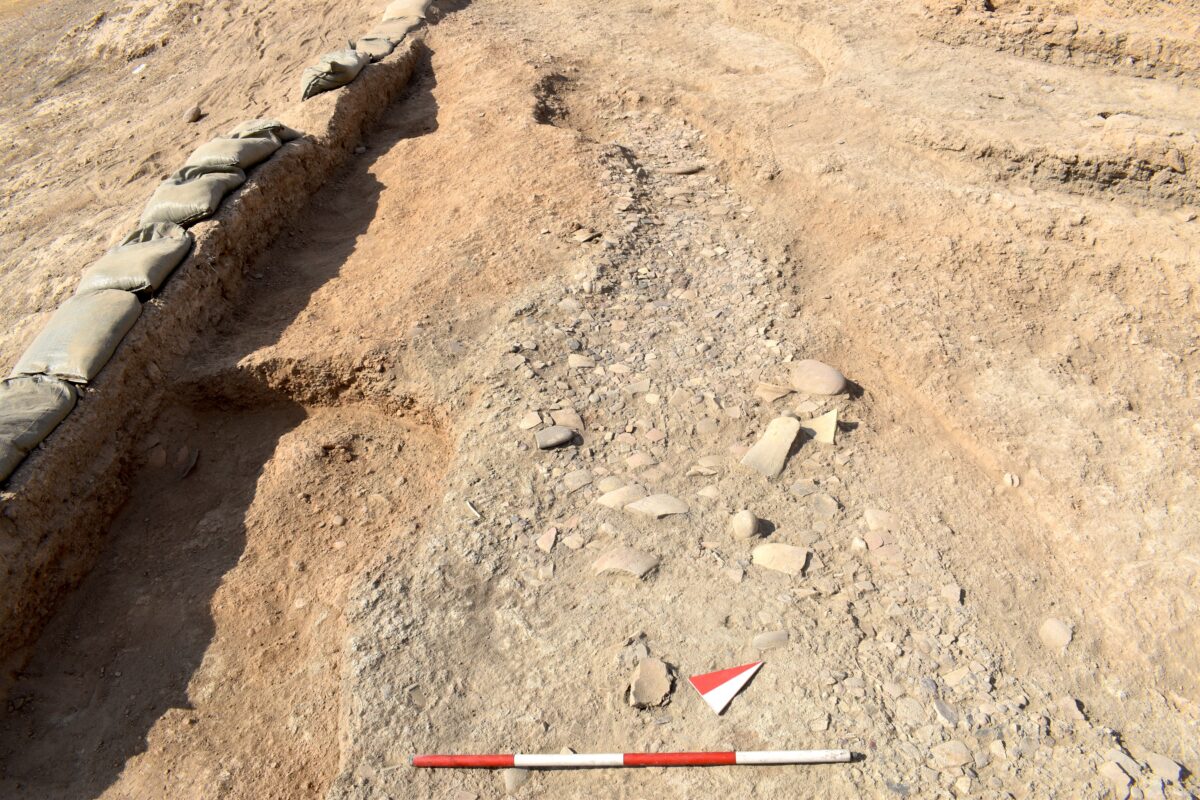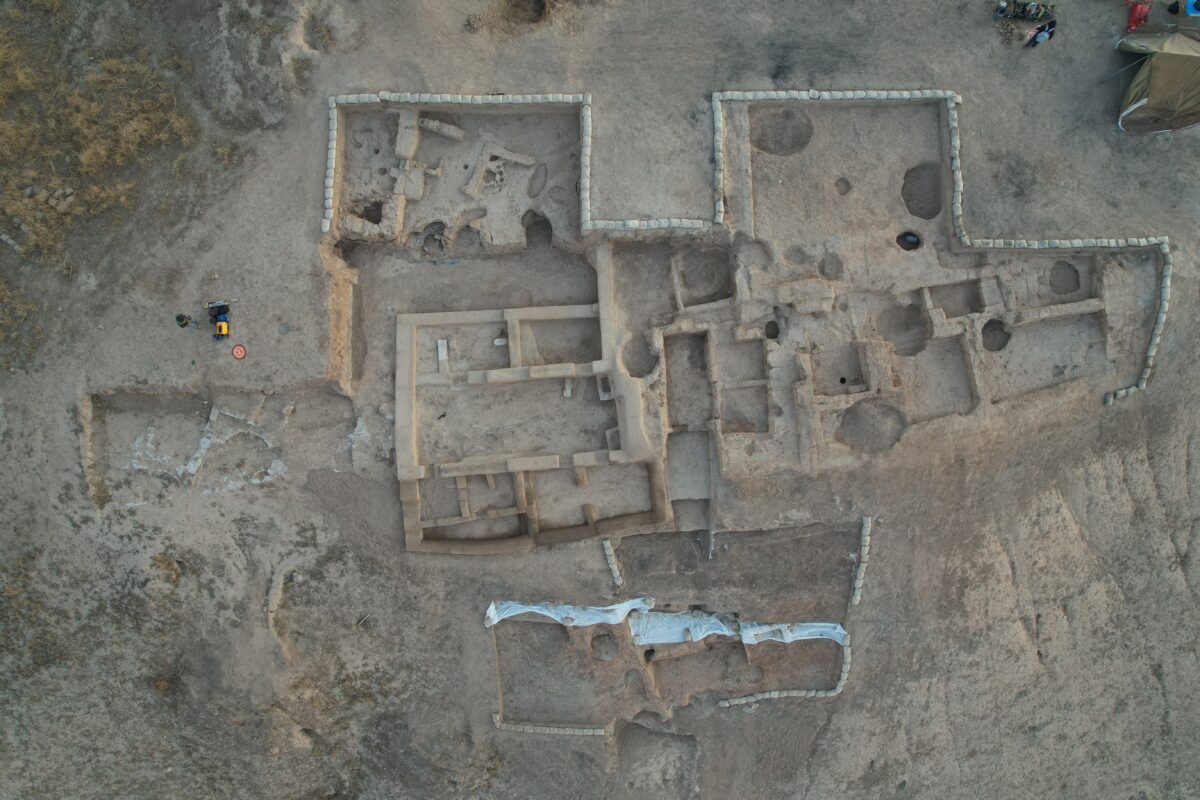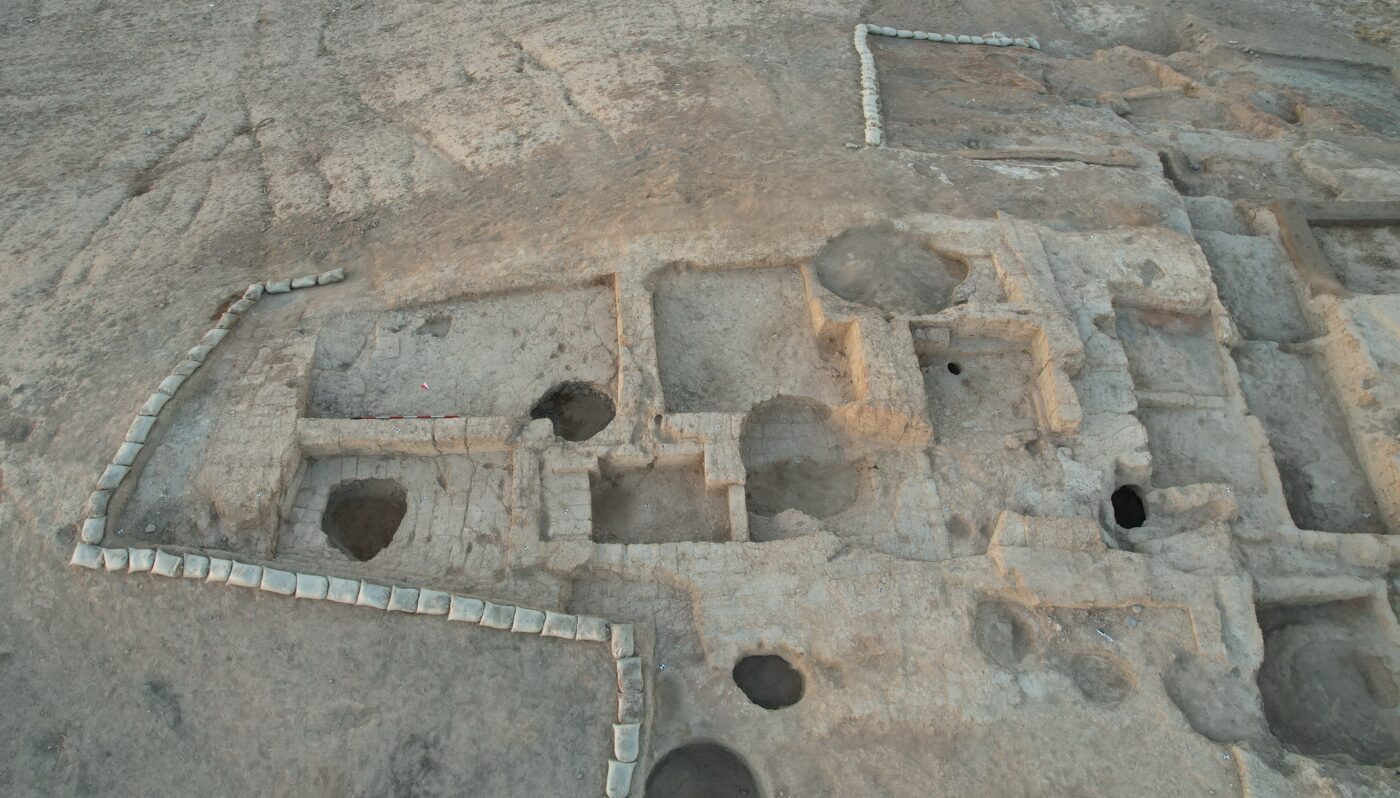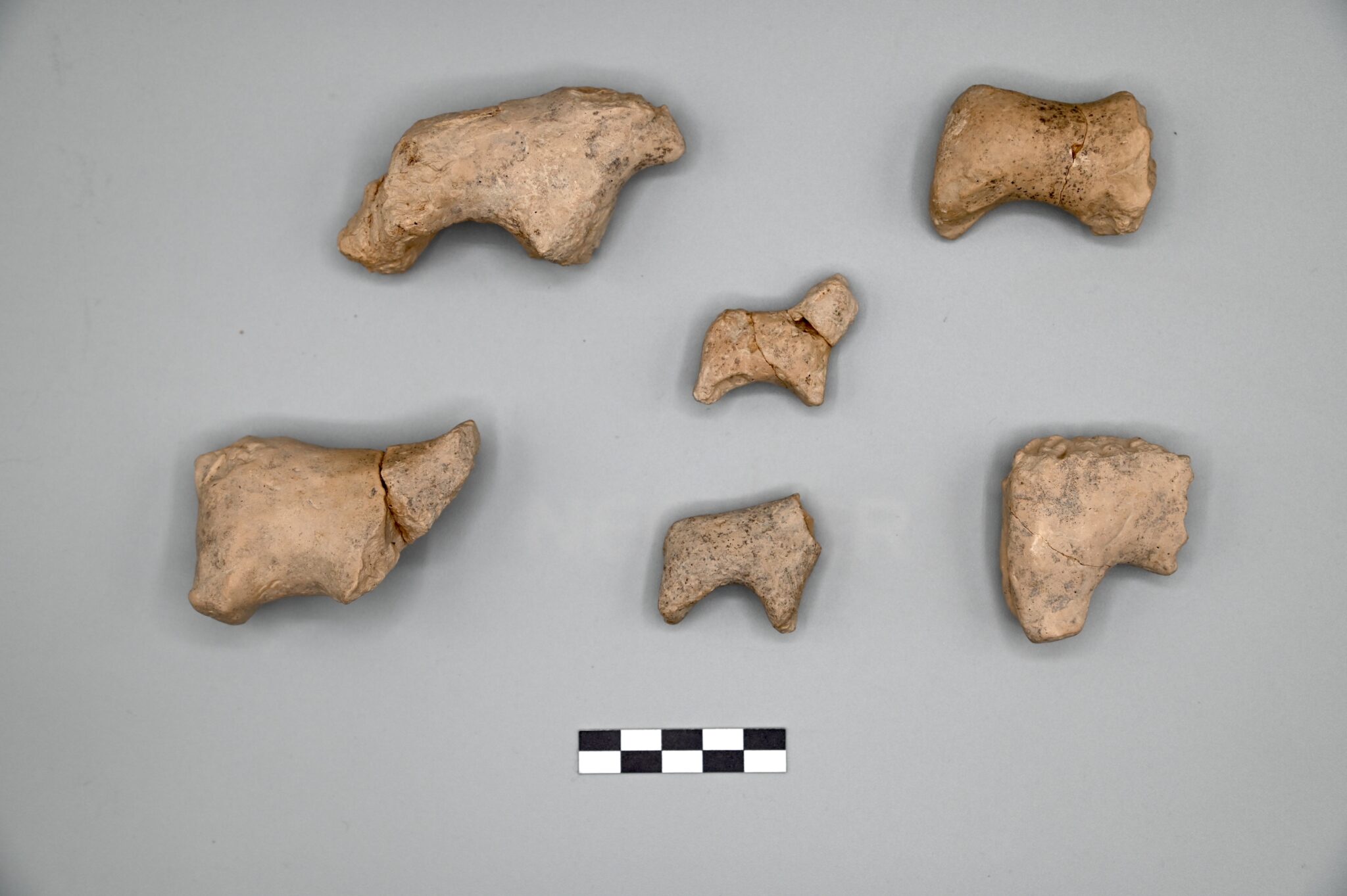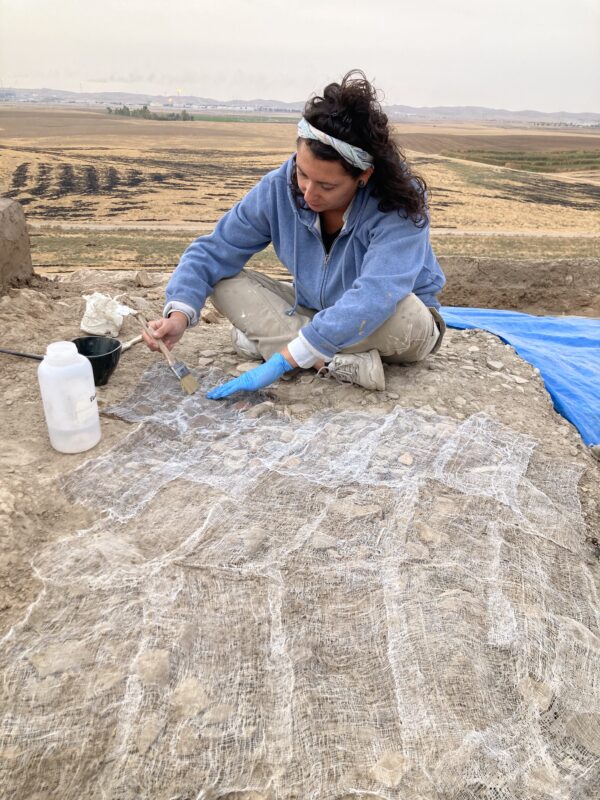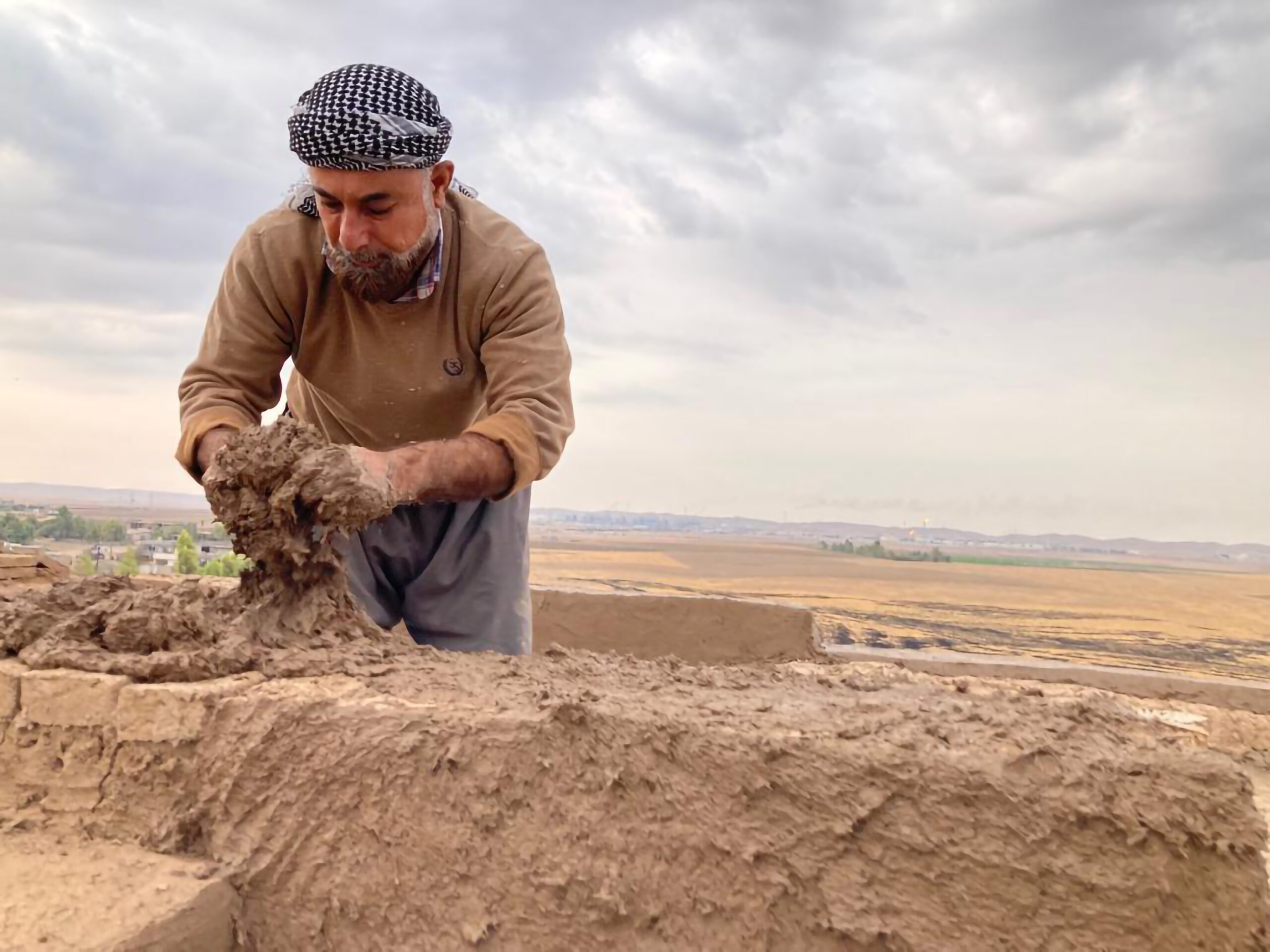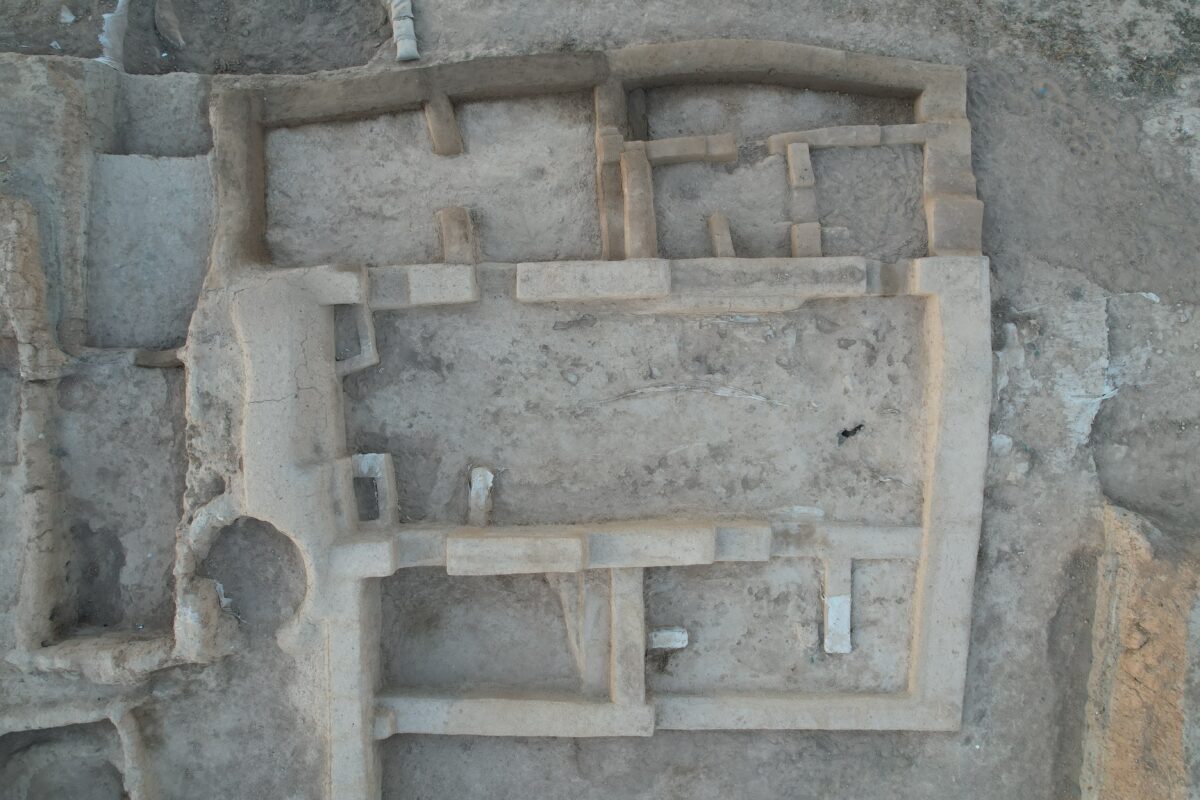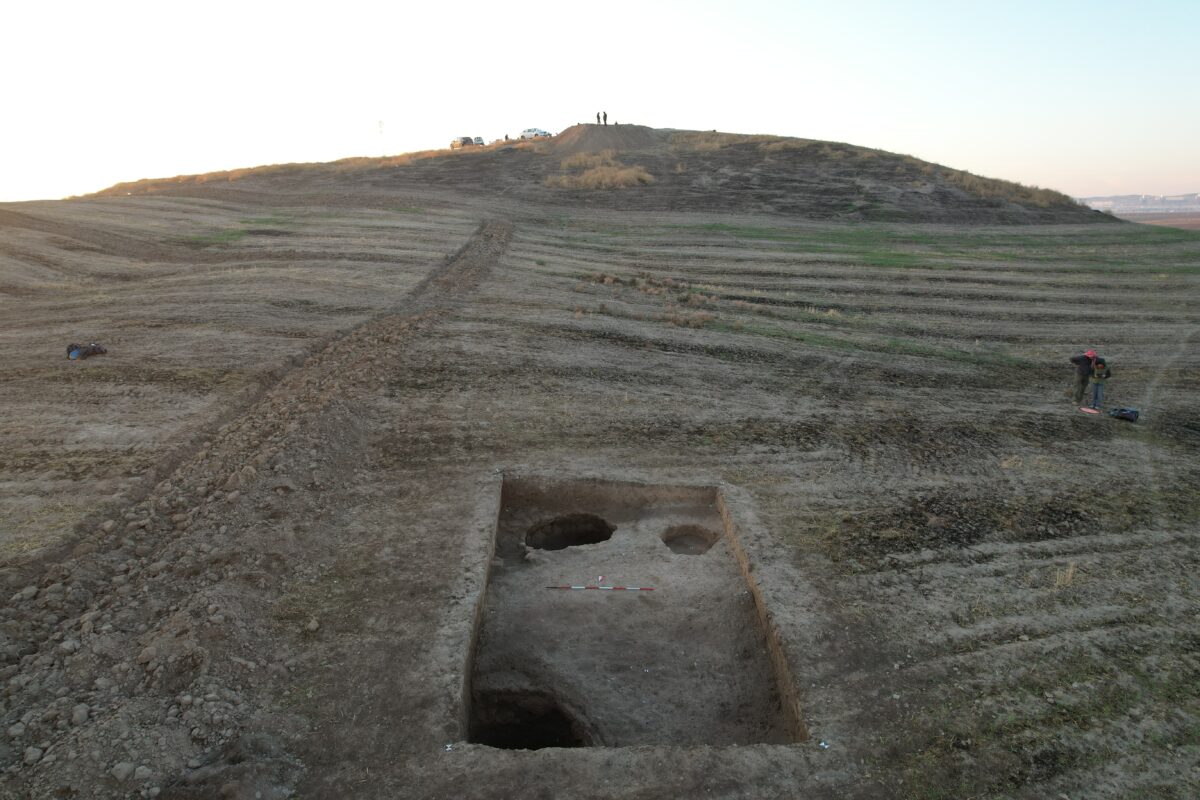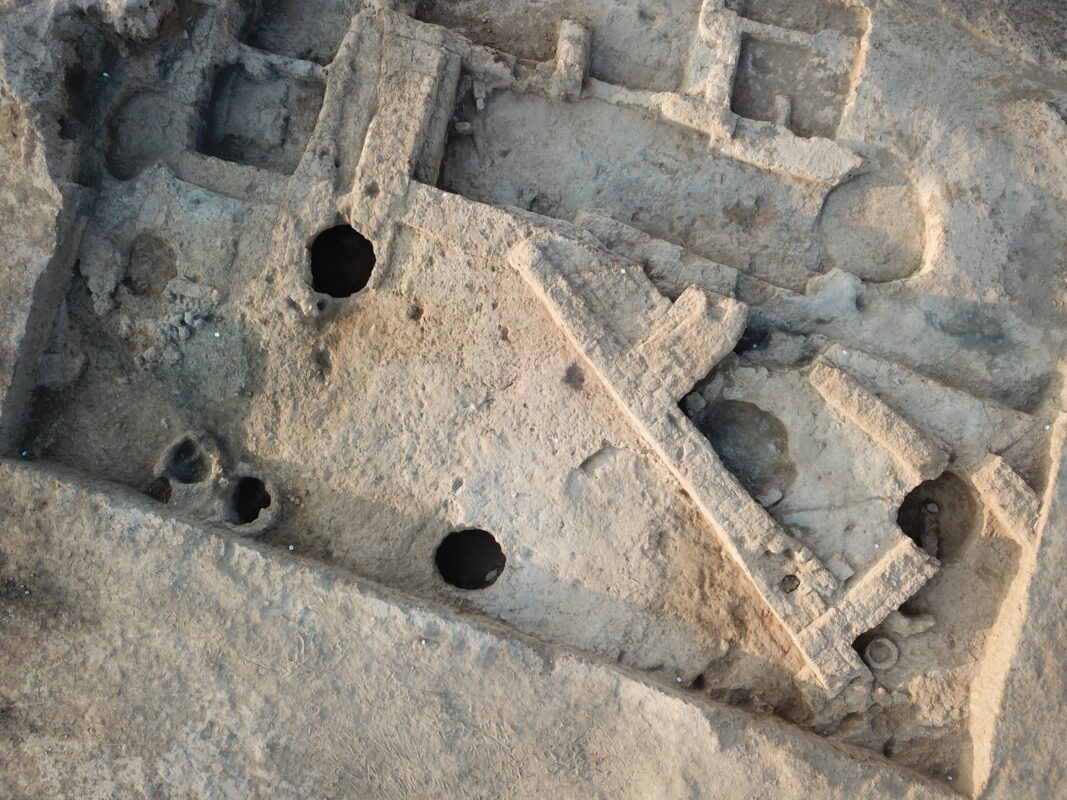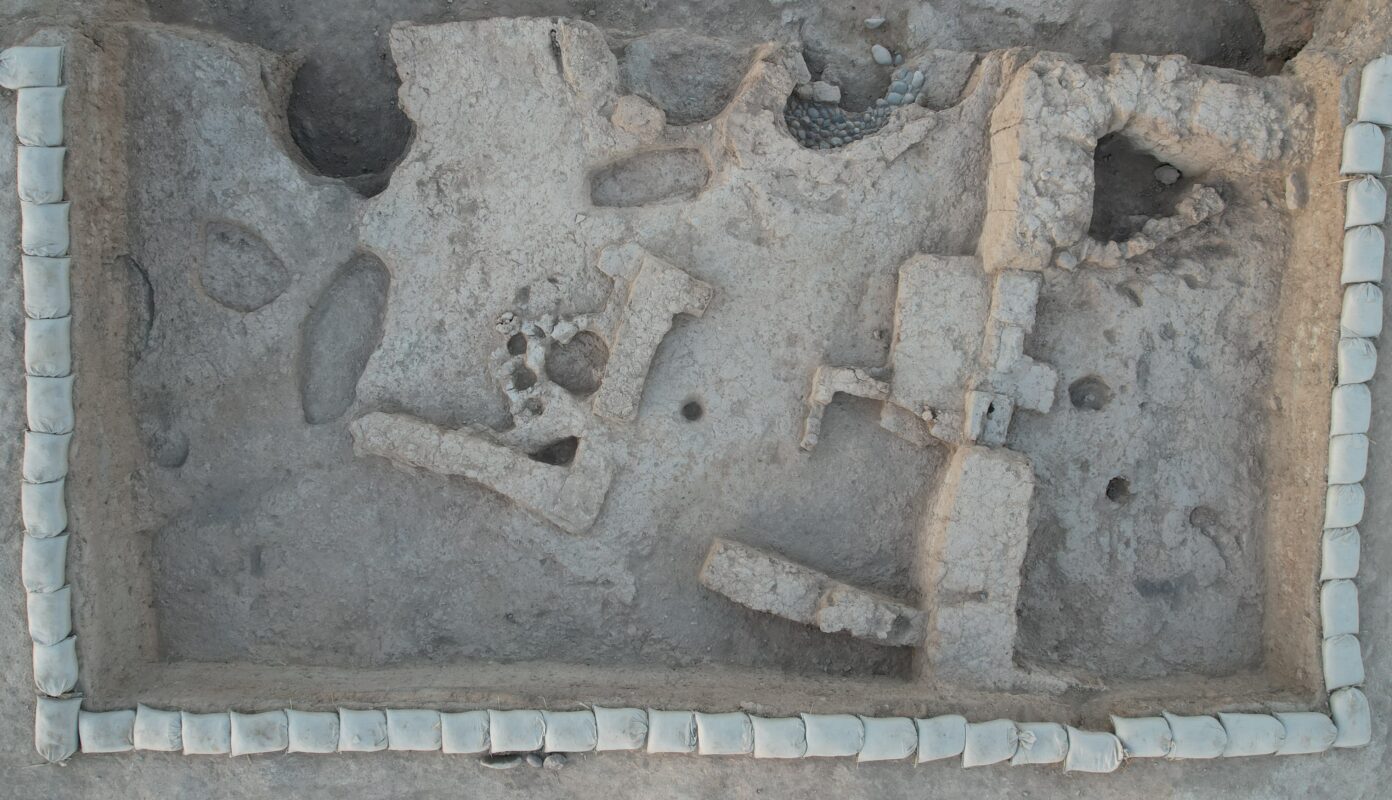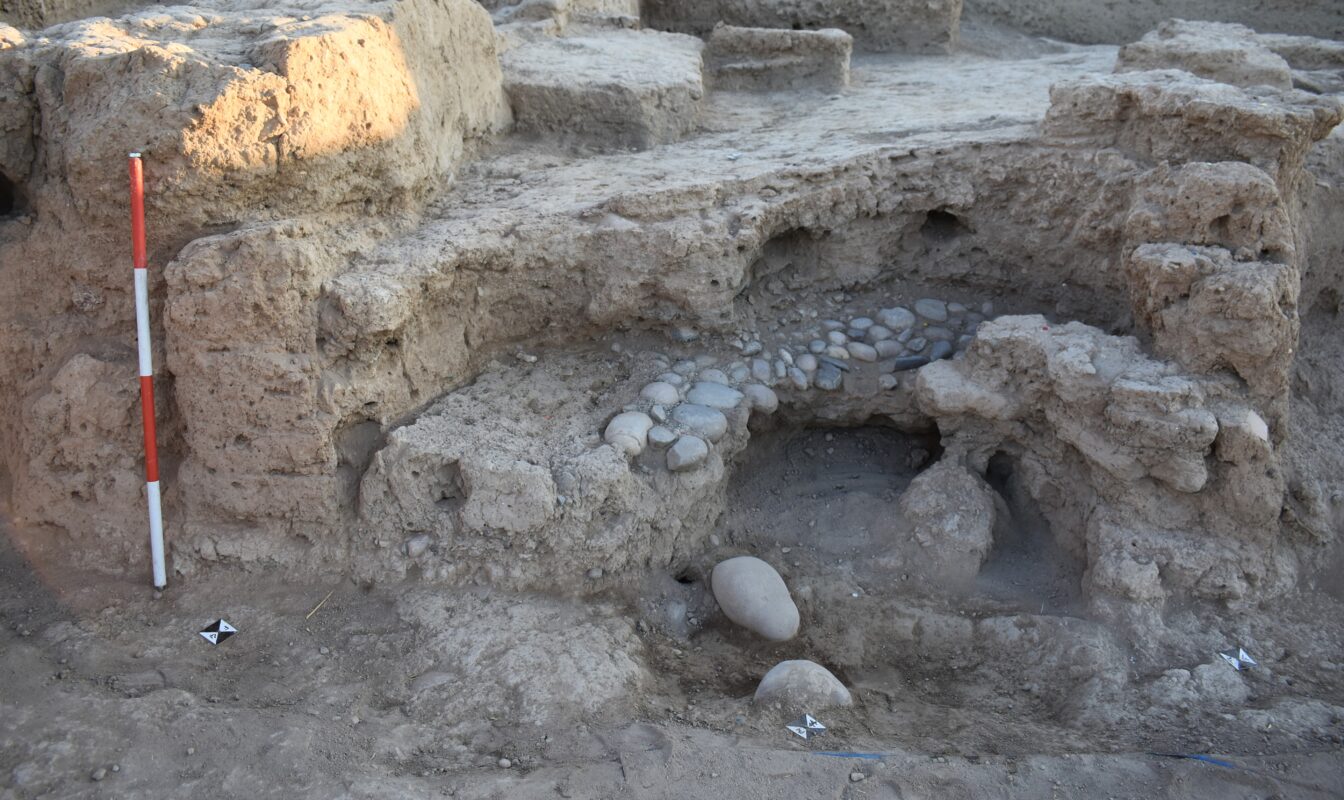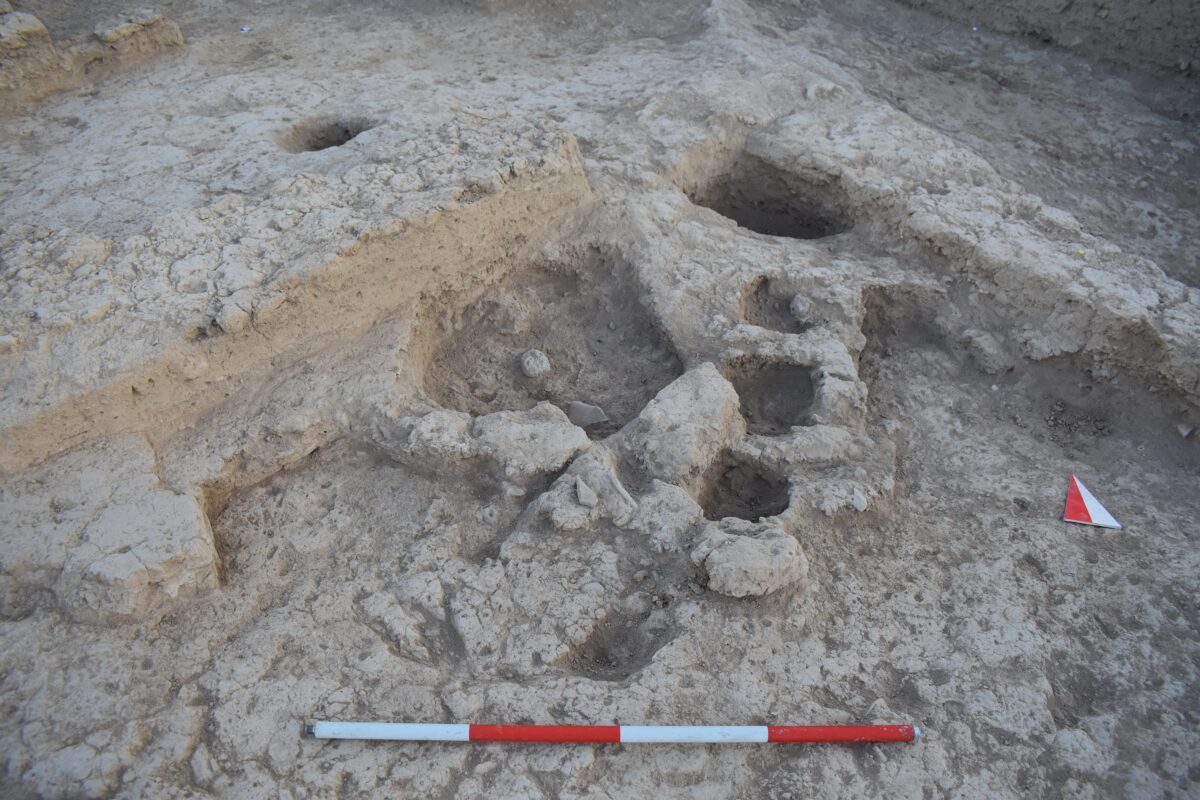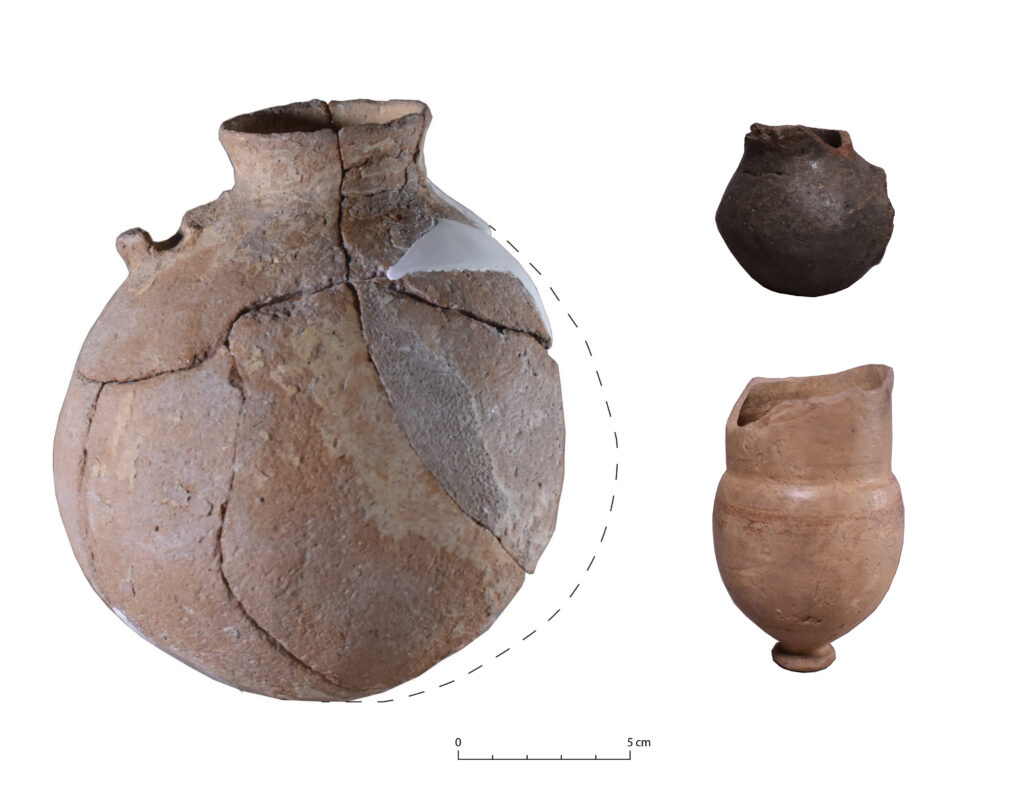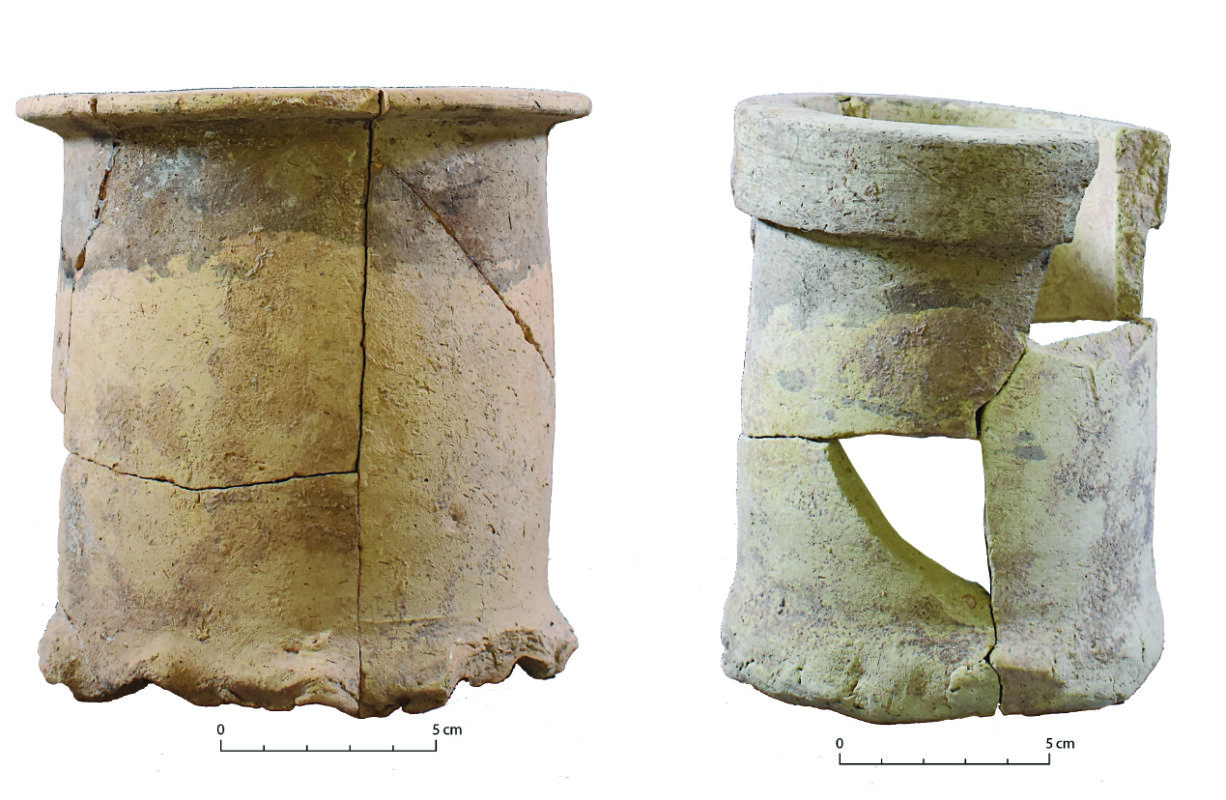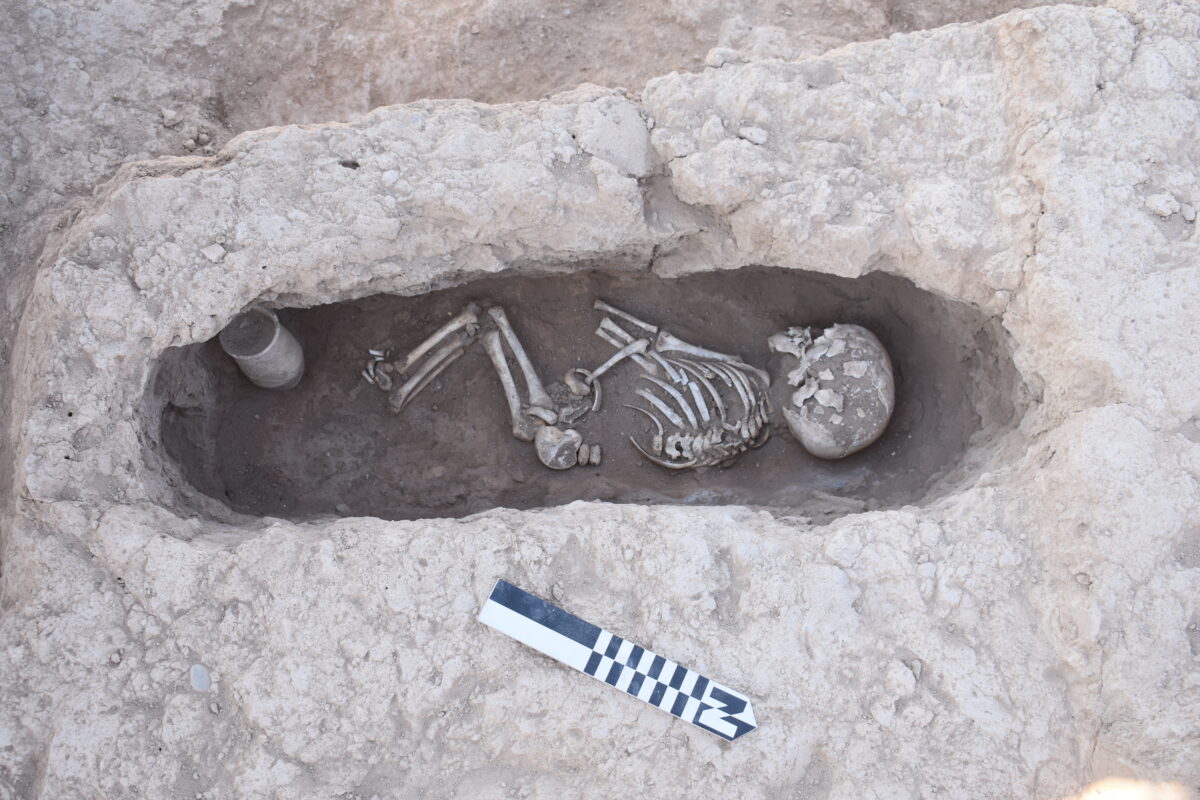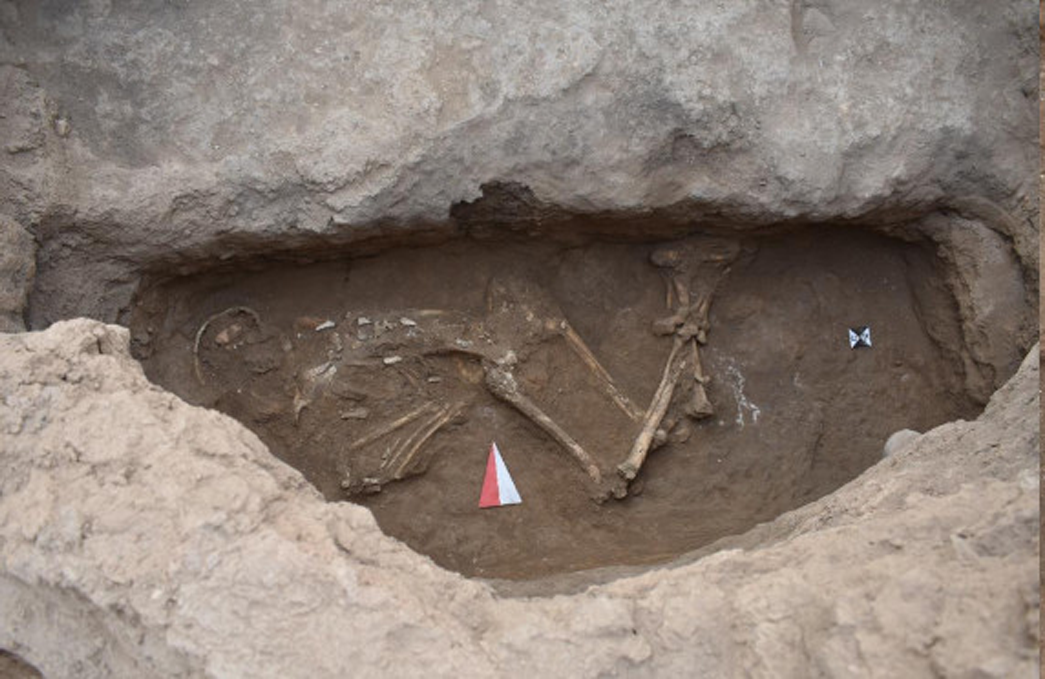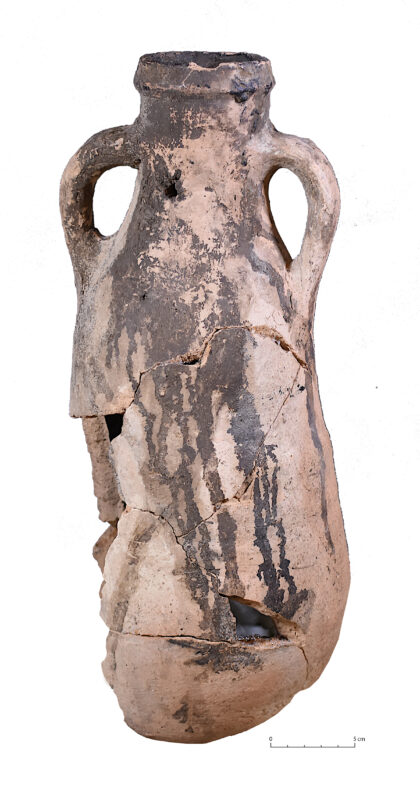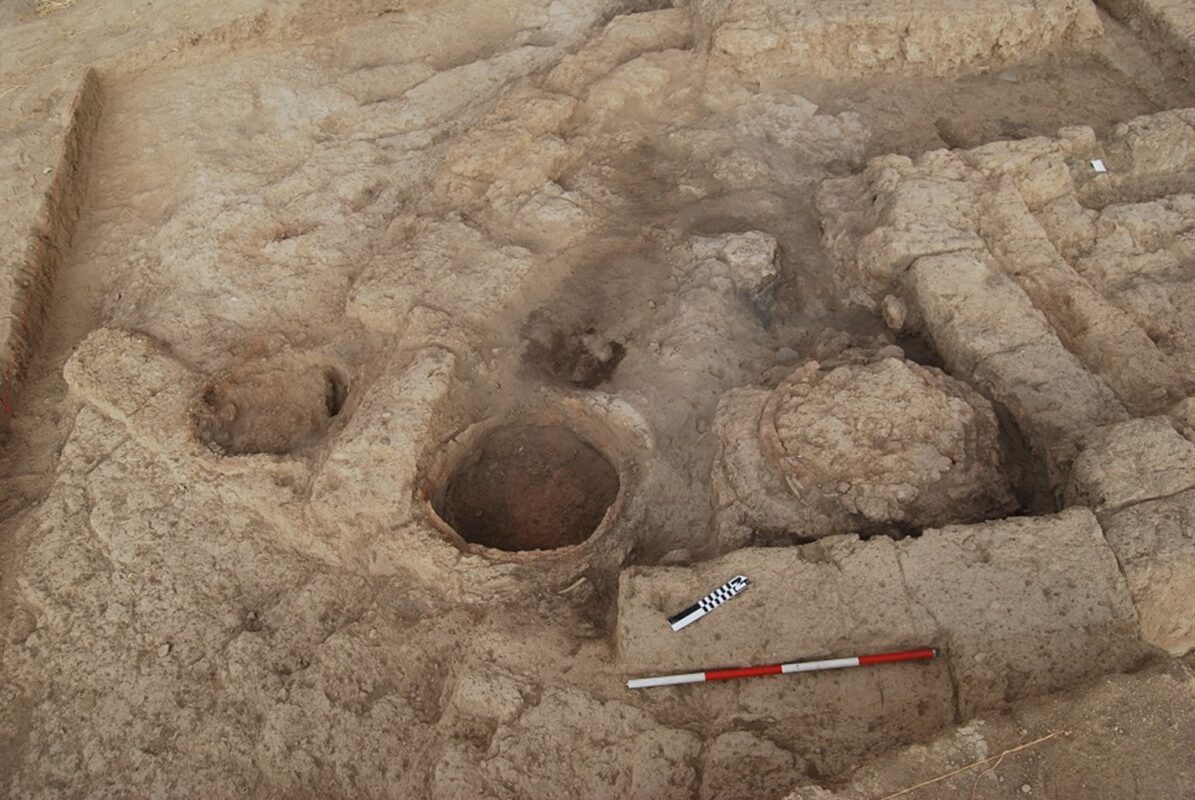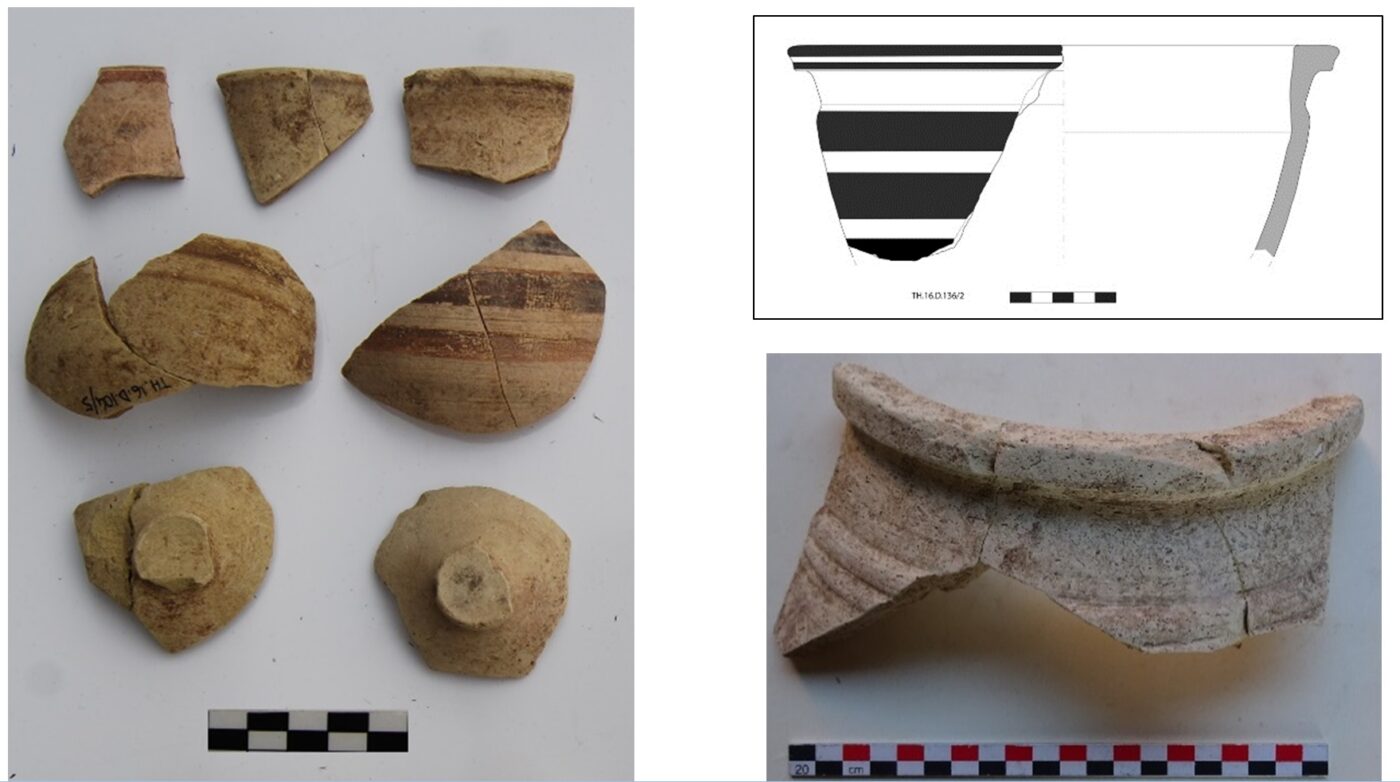Nella trincea di scavo sul declivio meridionale del sito è documentata una lunghissima e ininterrotta sequenza occupazionale, dal VII al IV millennio a.C., che permette di indagare nella piana di Erbil il passaggio fondamentale dalle comunità di villaggi agricoli del Neolitico alle prime strutture urbane della Mesopotamia settentrionale. I livelli più antichi raggiunti risalgono all’epoca di Halaf (fine VII-VI millennio a.C.), quando si assiste nella piana di Erbil ad un progressivo sviluppo demografico con comunità di agricoltori e allevatori che sfruttano la rete di corsi d’acqua. È questo un periodo di intensi contatti che determinano la diffusione di elementi culturali simili, dalla ceramica dipinta alle abitazioni circolari, su un territorio amplissimo, che va dall’ Anatolia alla Siria e Mesopotamia Settentrionale. Ad Helawa il villaggio non doveva superare i 2-3 ettari e nella trincea sono stati riportate alla luce più fasi con strutture in argilla compattata (pisé) o costruite con mattoni di forma ovoidale, associate a focolari e forni per la cottura del cibo e ad una piattaforma di ciottoli. La ceramica di questo periodo (Halaf Tardo) presenta una decorazione dipinta policroma a motivi geometrici e le forme più ricorrenti sono le piccole olle e le coppe a pareti svasate, o le giare.
La successiva fase è relativa al periodo di Ubaid, databile tra la fine del VI e la prima metà del V millennio a.C. L’insediamento risulta sempre di dimensioni piuttosto piccole, ma si riconoscono degli elementi che suggeriscono una più marcata complessità sociale ed economica. Una struttura composta da vani cellulari di piccole dimensioni associati ad una fornace per la cottura della ceramica è verosimilmente parte di un’area del villaggio adibita alla produzione artigianale.
Dopo l’abbandono del complesso produttivo la zona viene destinata a scarico con livelli cinerosi e moltissima ceramica, piccoli oggetti, ossa animali e resti vegetali. Da questo livello provengono numerosi oggetti in argilla malcotta di forma ovoidale, interpretati come proiettili da fionda, coni e fusaiole di terracotta, ciottoli in pietra modificati e usati come strumenti da percussione e da levigatura, punteruoli e utensili in osso, ma anche alcuni ornamenti, tra cui un pendaglio in pietra decorato da incisioni.
La ceramica dipinta monocroma, nelle forme tipiche tardo Ubaid delle ciotole e delle piccole giare mostra una decorazione geometrica lineare, a bande e motivi campiti a scacchiera. Rarissime le rappresentazioni figurate, umani e animali, e il frammento di giara dipinto con un capride dalla lunghe corna ha ispirato il logo della MAIPE in abbinamento con la linea stilizzata del profilo del sito.
Frammento di vaso dipinto di periodo Ubaid raffigurante un capride stilizzato che ha ispirato il logo MAIPE
Pendaglio in pietra inciso risalente al periodo Ubaid
L’insediamento del Tardo Calcolitico 1 (4800/4500-4200 a.C.) è documentato da scarichi probabilmente relativi ad una fornace – mostrando la continuità di uso artigianale dell’area – e da un atelier per la lavorazione dell’ossidiana, che veniva importata dall’Anatolia orientale. Subito sopra questi livelli è stato individuato un edificio databile al Tardo Calcolitico 2 iniziale (4200-4000 a.C.), formato da ambienti quadrangolari collegati da scale, affiancato su entrambi i versanti da forni circolari verosimilmente utilizzati per la preparazione alimentare. All’interno della struttura si trovavano diversi vasi, oggetti in pietra e uno spillone in rame. Tipiche del periodo le ciotole coniche prodotte in serie con impasto ricco di inclusi vegetali (‘Wide Flower Pot’) assieme a giare a orlo svasato e a vasi in ceramica di impasto grigio. Il materiale e la tecnica edilizia sono indizi dell’importanza dell’edificio e permettono di ipotizzare lo sviluppo e la maggiore articolazione interna dell’insediamento. La struttura è successivamente obliterata da una serie di silos per l’immagazzinamento delle derrate alimentari, databili sempre al Tardo Calcolitico 2. Gli studi archeo-botanici hanno dimostrato la prevalenza nelle installazioni e nei livelli associati di orzo e cereali. Siamo di fronte a una chiara evidenza di accumulo delle risorse, in un centro che sappiamo dalla ricognizione essere oramai esteso su quasi dieci ettari. Tre sepolture di infanti, con i corpi deposti entro giare, sono inoltre associate a questa fase. L’ultima occupazione del Tardo Calcolitico (2 finale e 3 iniziale, (c. 4000-3700 a.C.) è caratterizzata da strutture murarie con rifacimenti e modifiche e da pavimentazioni rialzate più volte. Risale a un momento iniziale di questo periodo l’edificio amministrativo scoperto subito a ovest della Step Trench.
Lo studio tecnologico dei manufatti in pietra scheggiata in selce e ossidiana ha restituito un interessante quadro dei cambiamenti che sono intercorsi tra i periodi più antichi (Ubaid e Tardo Calcolitico 1) e quelli più recenti (Tardo Calcolitico 2-3). Nella fase più antica (Ubaid), la produzione litica avviene esclusivamente all’interno delle unità domestiche e degli spazi funzionali identificati. Gran parte delle sequenze di scheggiatura sono finalizzate alla produzione di piccole schegge, attraverso tecnologie non specializzate, con il fine di realizzare strumenti ad hoc e inserti per falcetti con cui svolgere le attività di mietitura del grano. Durante il Tardo Calcolitico 1, accanto alla tradizione litica Ubaid che perdura, compaiono tecniche di realizzazione di falcetti più elaborate, sfruttando ora anche lamelle più regolari. Questa fase coincide con il picco delle importazioni di ossidiana dall’Anatolia orientale che, ad Helawa, veniva lavorata in loco per la produzione di lamelle, nell’ambito dell’area artigianale identificata.
A partire dai periodi più recenti (Tardo Calcolitico 2-3), si assiste ad un vero e proprio cambiamento socioeconomico. La produzione litica riguarda la sola realizzazione di manufatti ad uso domestico, mentre i falcetti vengono ora prodotti utilizzando porzioni di grandi lame, in selce di ottima qualità, prodotte da artigiani specializzati, indipendenti dalla sfera del villaggio, e probabilmente operanti in specifici workshop localizzati presso le aree di estrazione delle materie prime.
Lame in selce risalenti al Tardo Calcolitico 3
I dati bio-archeologici raccolti dai livelli associati alla Step Trench hanno permesso una prima ricostruzione dello sfruttamento delle risorse ambientali e dei cambiamenti di questo nel corso della plurimillenaria occupazione preistorica e protostorica.
Le faune attestate nelle fasi più antiche (Halaf e Ubaid) sono relative a specie domestiche (ovicaprini, bovini, suini) e selvatiche (gazzella). Il periodo più documentato è il Tardo Calcolitico, distinto nelle sue varie fasi (Tardo Calcolitico 1-3). Oltre alle specie domestiche riscontrate nei periodi più antichi, è sempre presente la gazzella, in percentuale maggiore, assieme ad altri animali selvatici (capriolo, volpe).
I materiali botanici (semi carbonizzati, carboni) nei livelli della trincea stratigrafica documentano l’evoluzione delle coltivazioni tra il VII e il IV millennio a.C. Tra i cereali è documentato l’orzo, (Hordeum vulgare), il farro (Triticum dicoccum) e frumenti nudi (Triticum aestivum/durum/turgidum). L’orzo risulta essere la coltura più frequente e abbondante: è presente, infatti, in tutto l’intervallo cronologico studiato, con dati quantitativi molto elevati per il Tardo Calcolitico 2, dovuti al riempimento di un silos che era quasi esclusivamente costituito da resti di orzo.
Il farro si accompagna sempre all’orzo, ma con dati di abbondanza inferiori. I frumenti nudi sembrano invece rappresentare una coltura secondaria, che acquisisce tuttavia una maggior diffusione durante l’età del Bronzo. Per quanto riguarda i legumi, sono stati rinvenuti pochi semi di lenticchia (Lens culinaris), veccia capogirlo o vecciola (Vicia ervilia), cicerchia (Lathyrus sativus) e pisello (Pisum sativum) solo nelle fasi più antiche (Ubaid 4 e TC 1).
Cariossidi di Hordeum vulgare dai silos del Tardo Calcolitico 2


